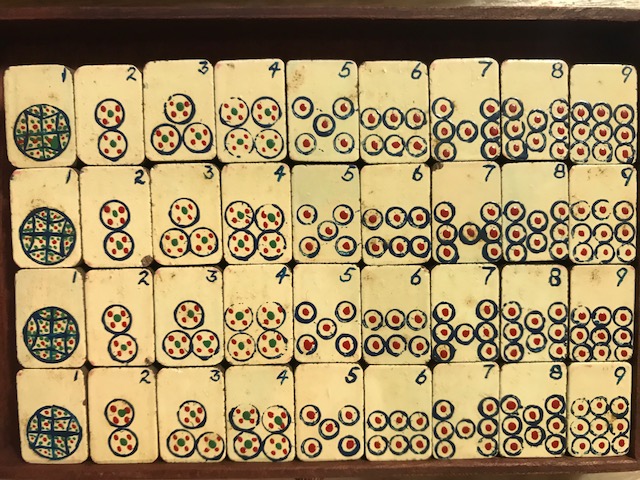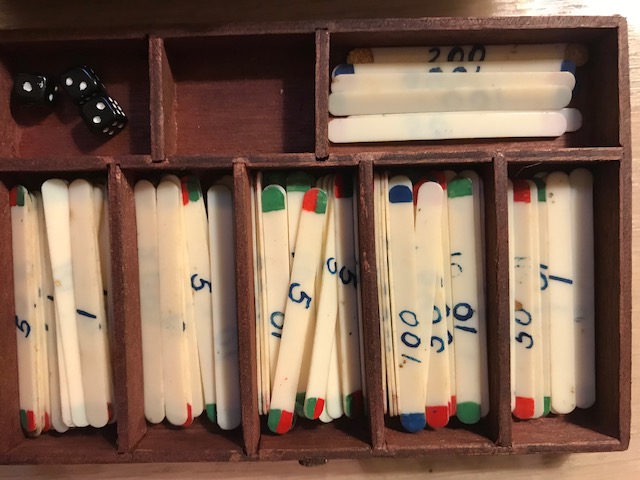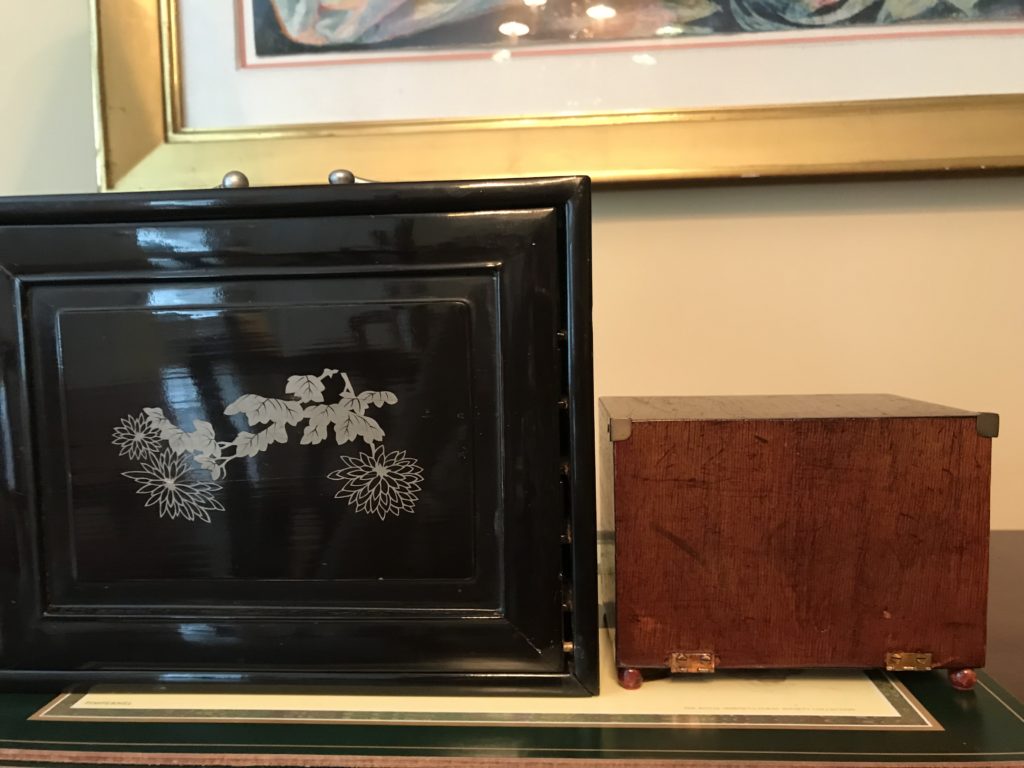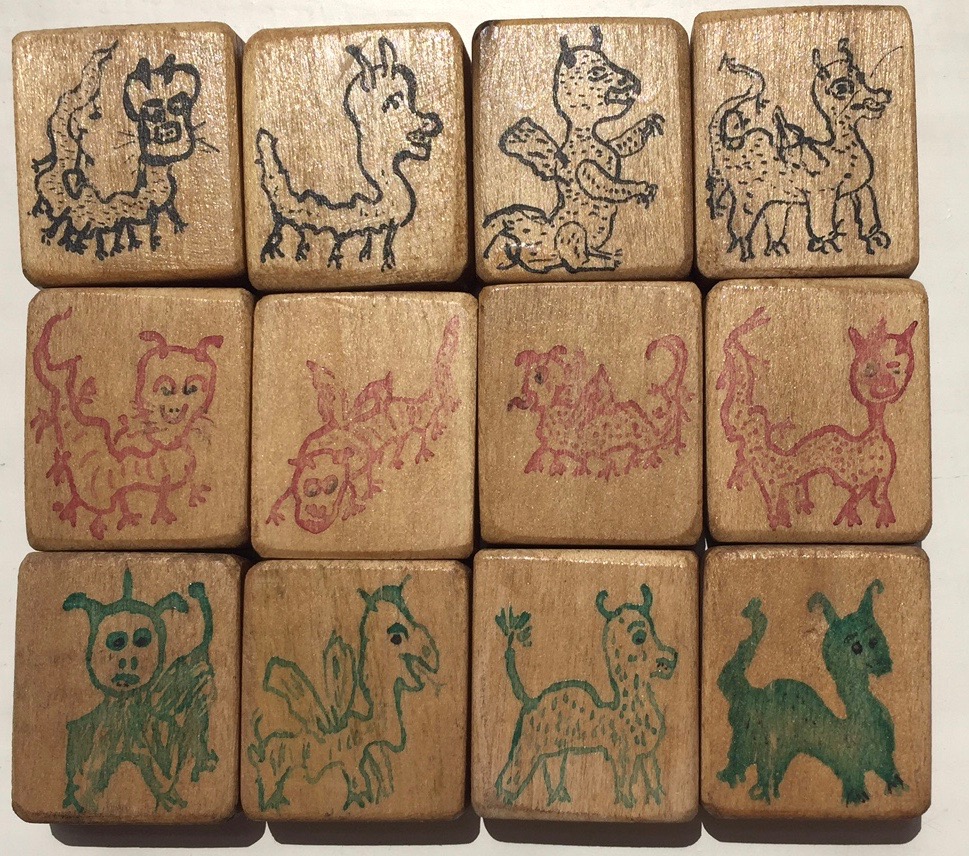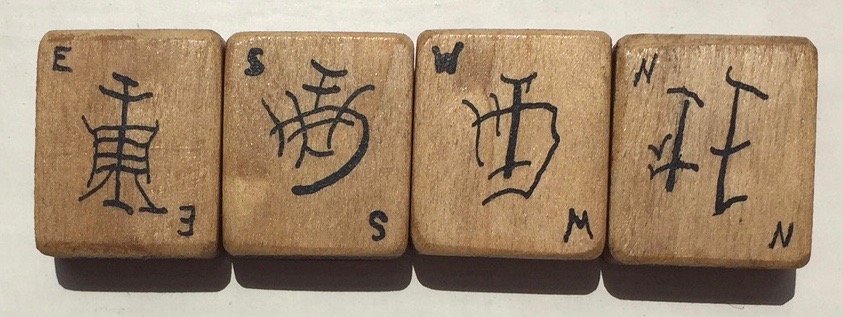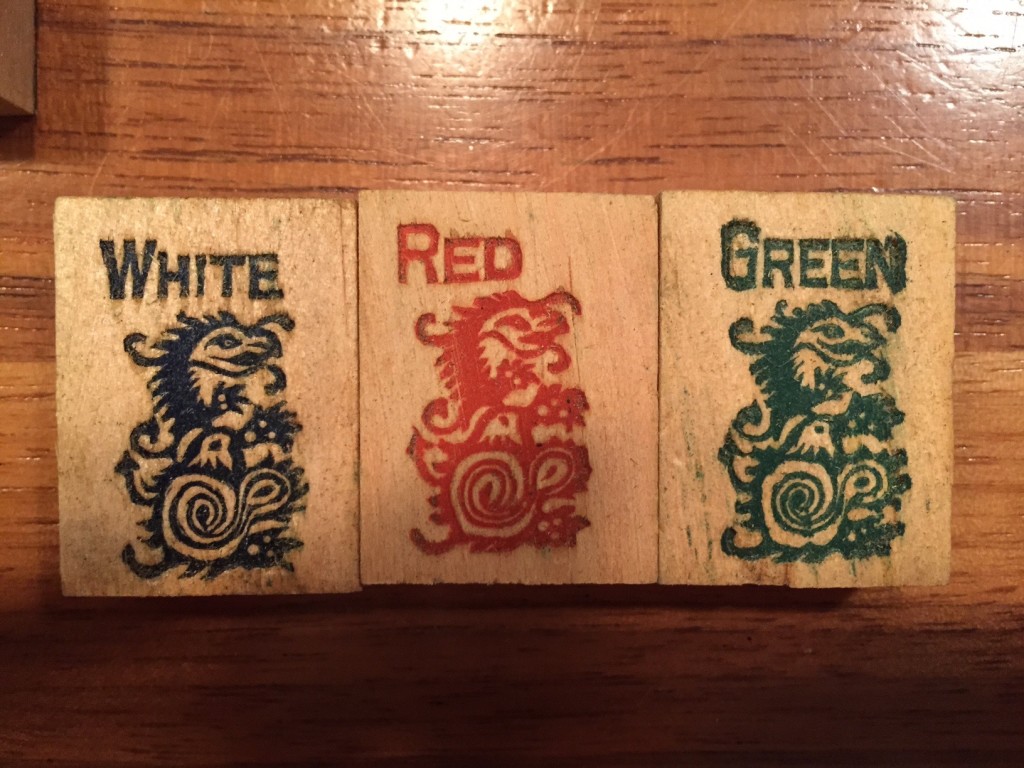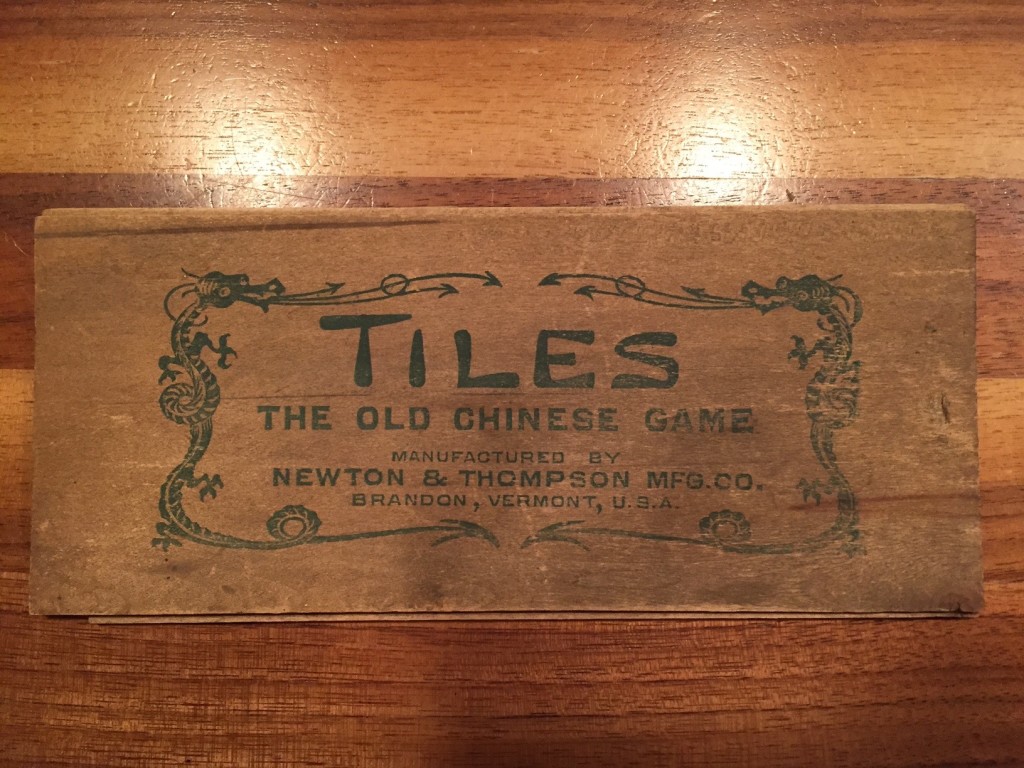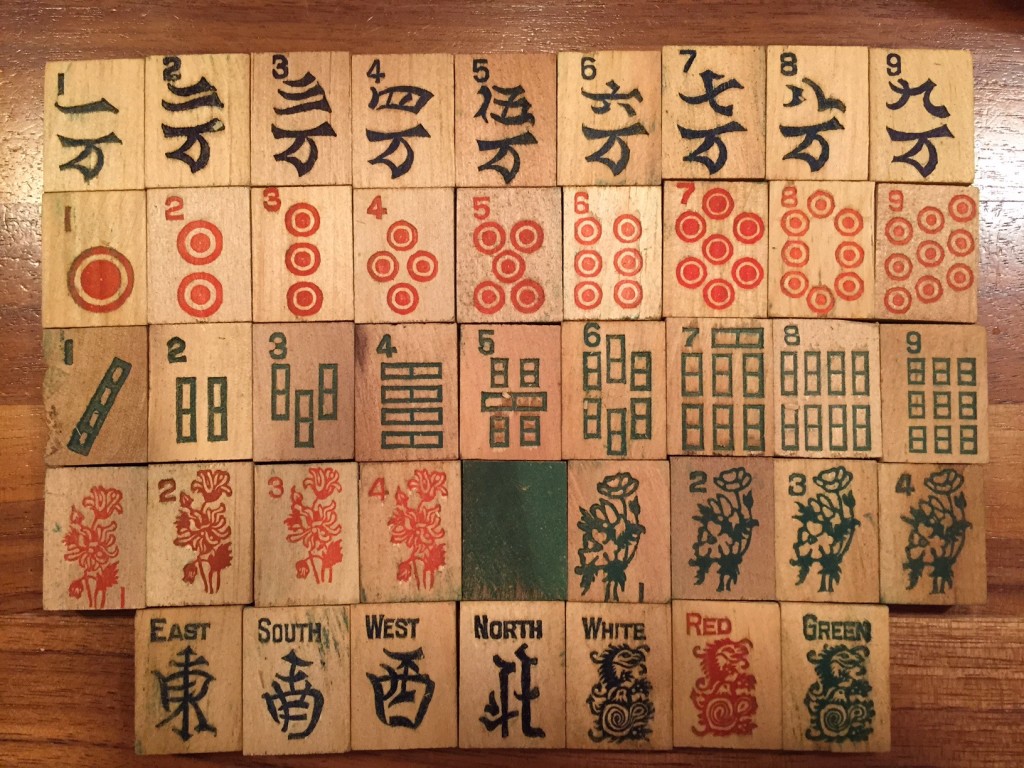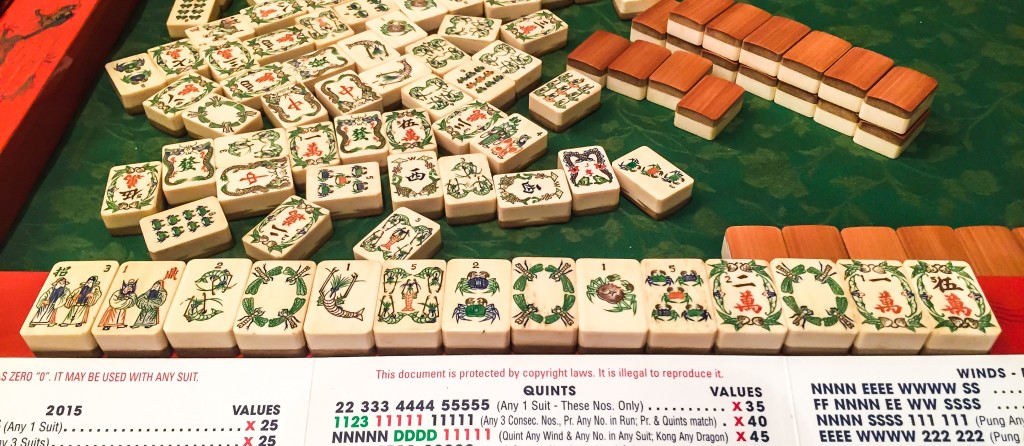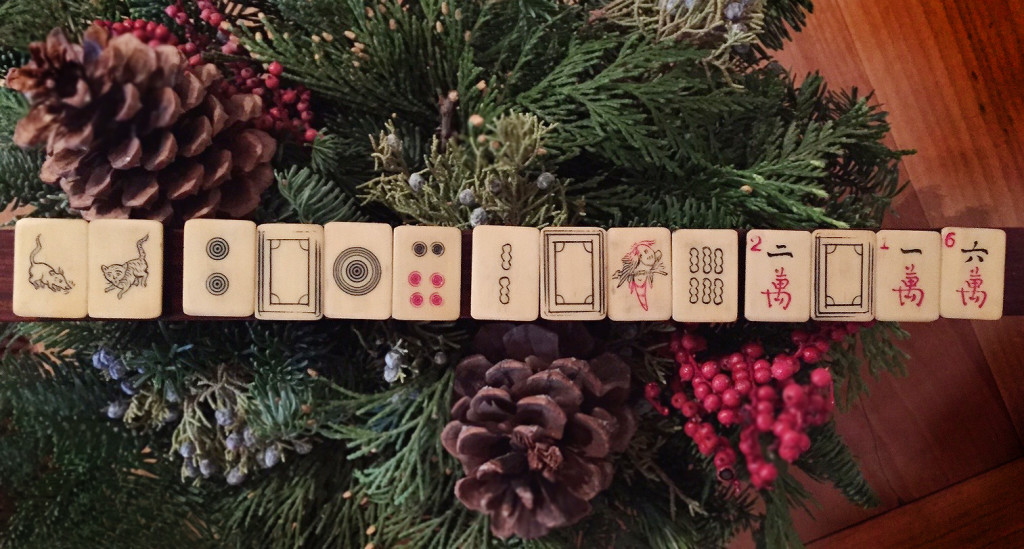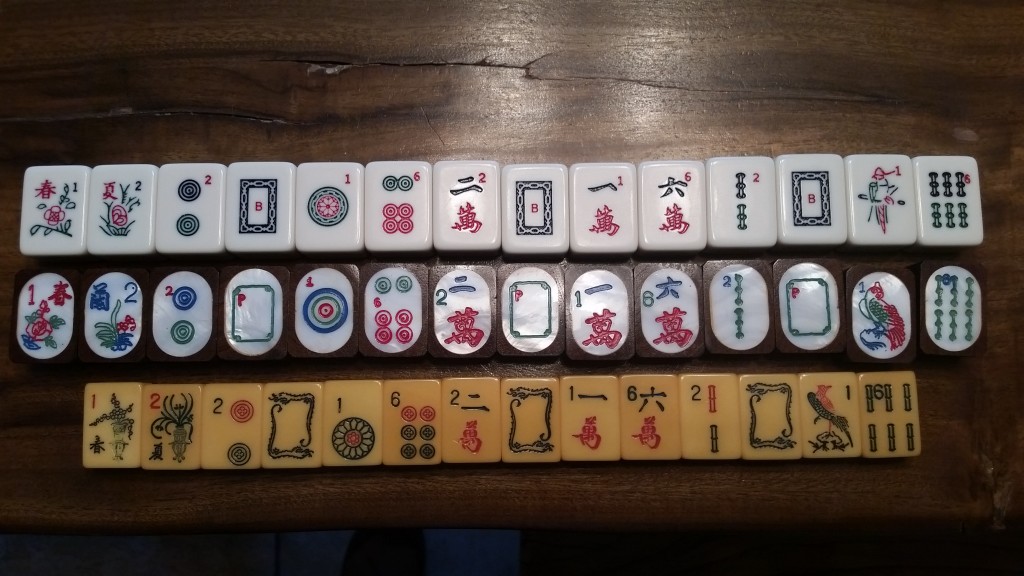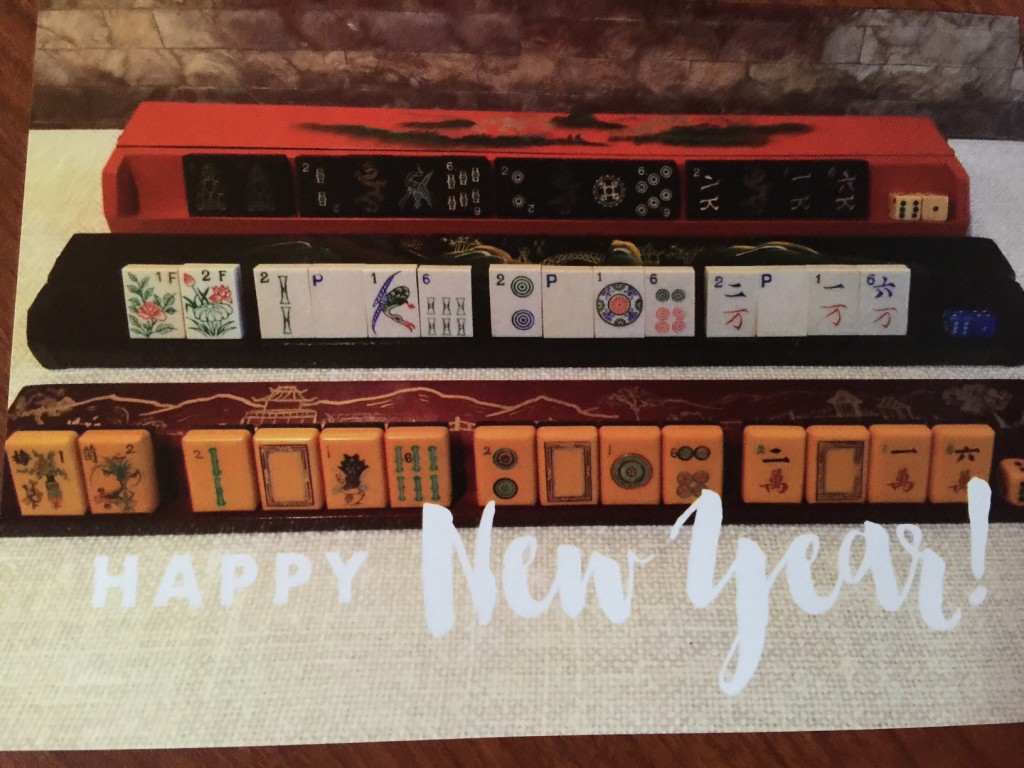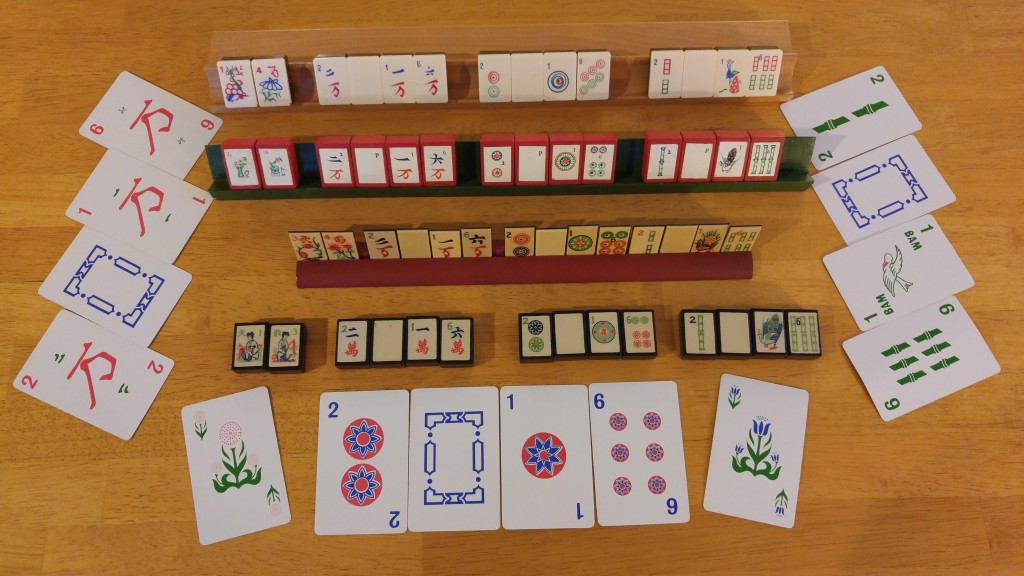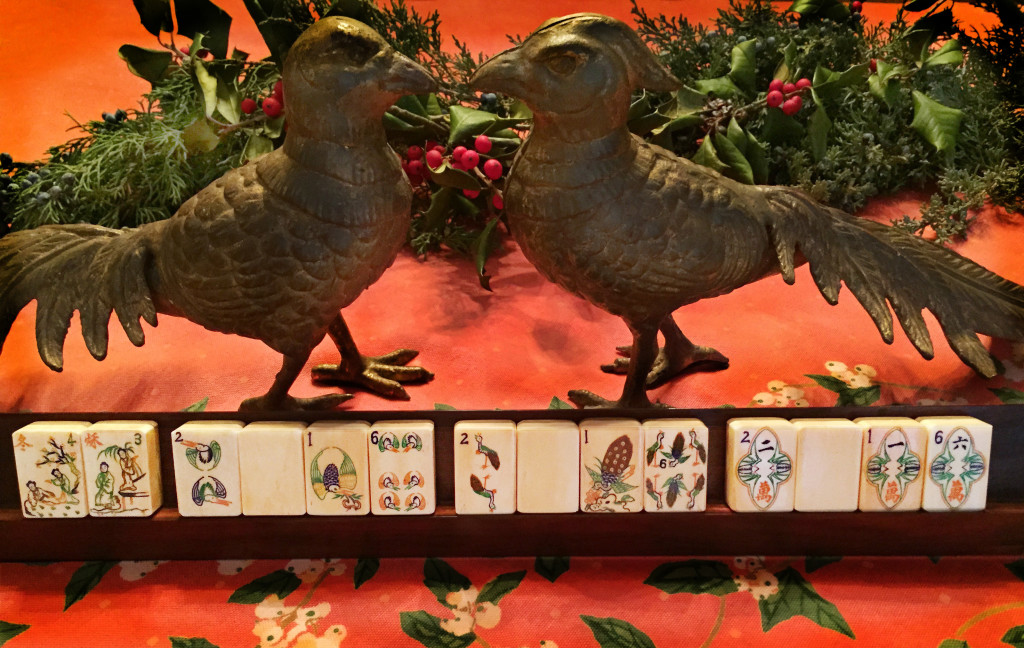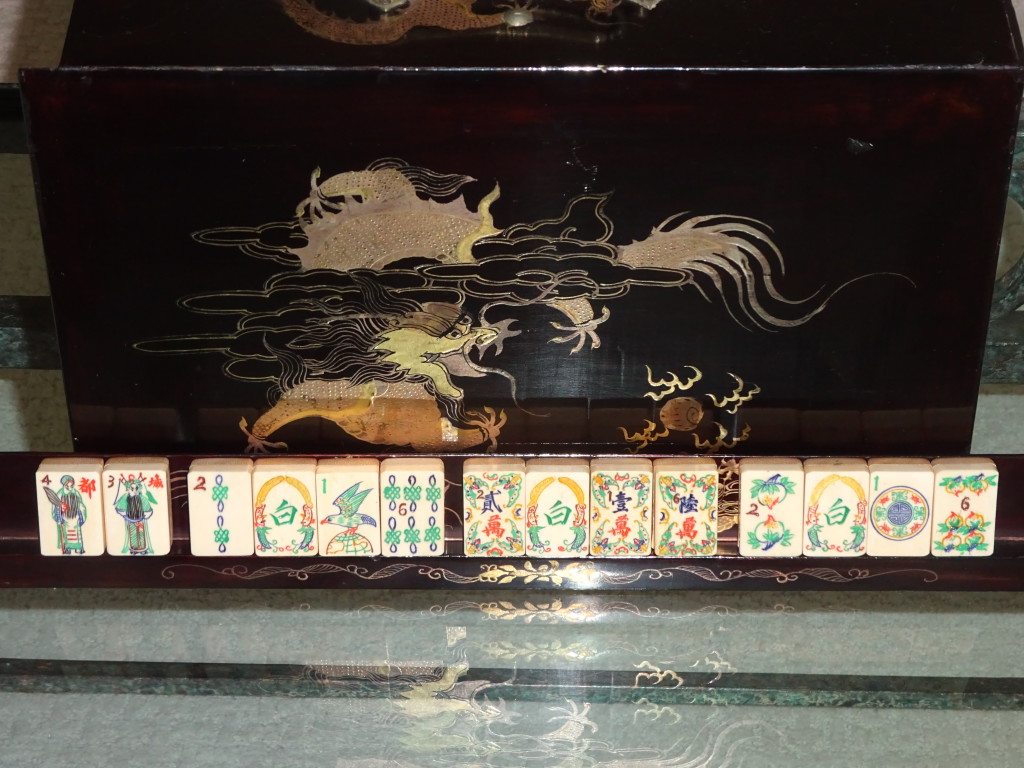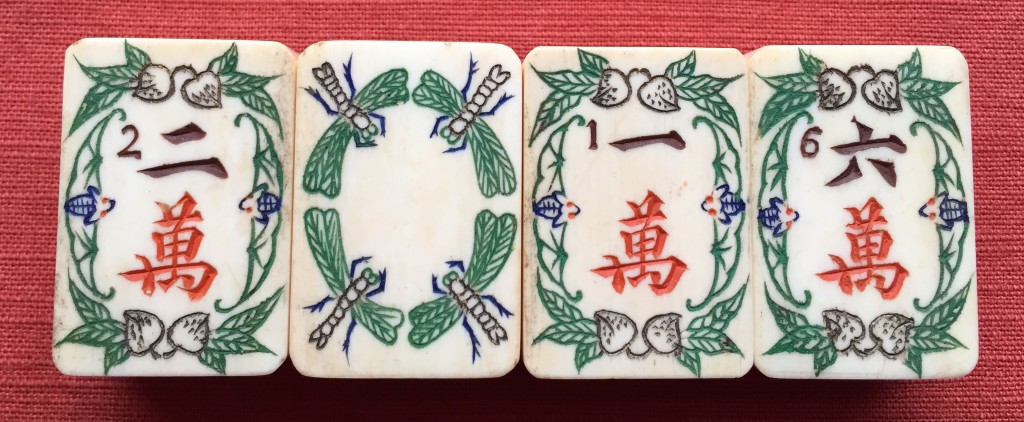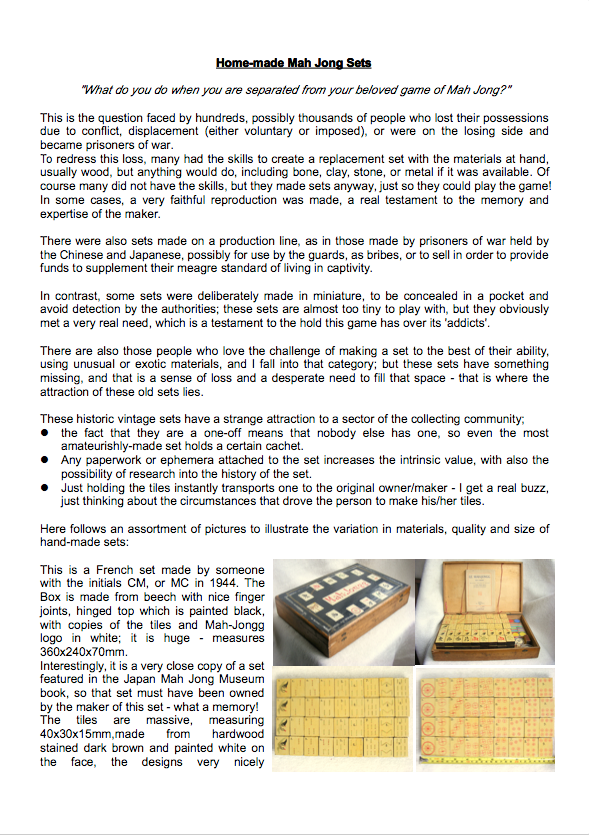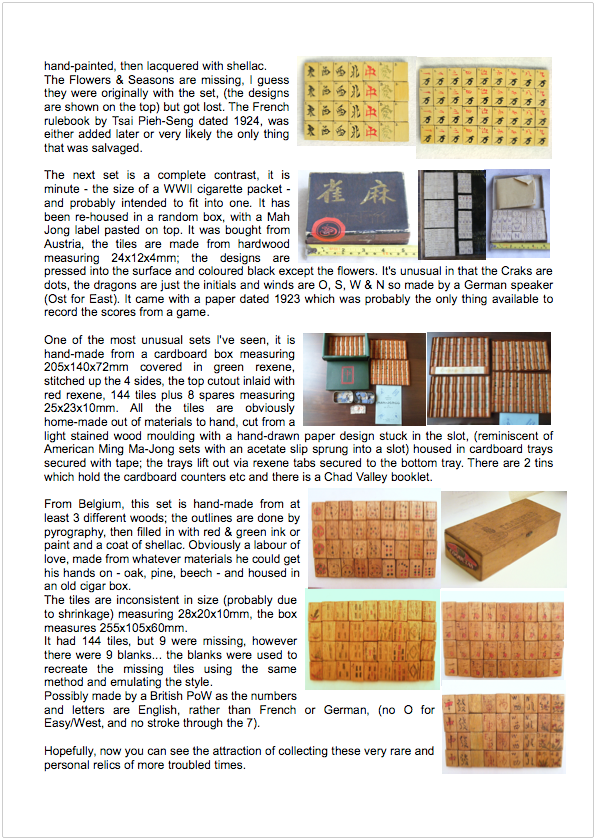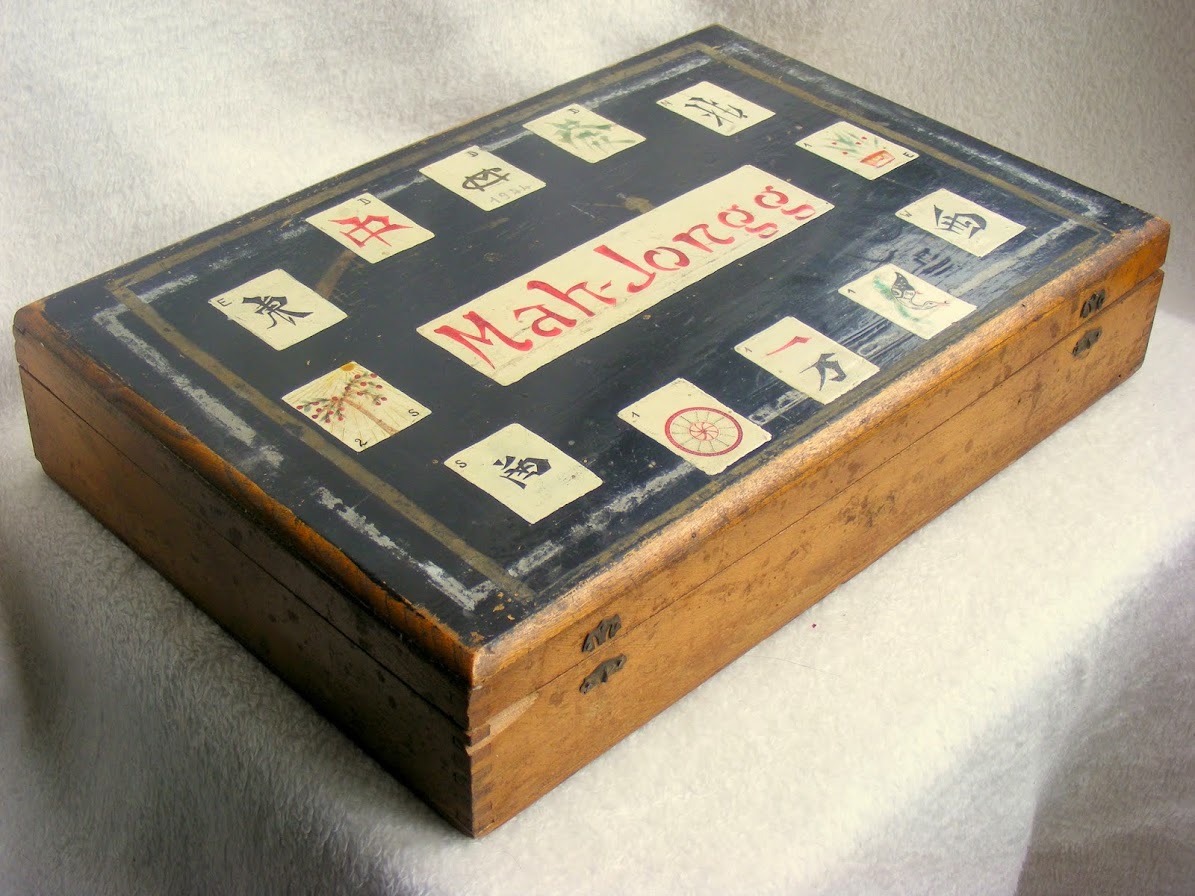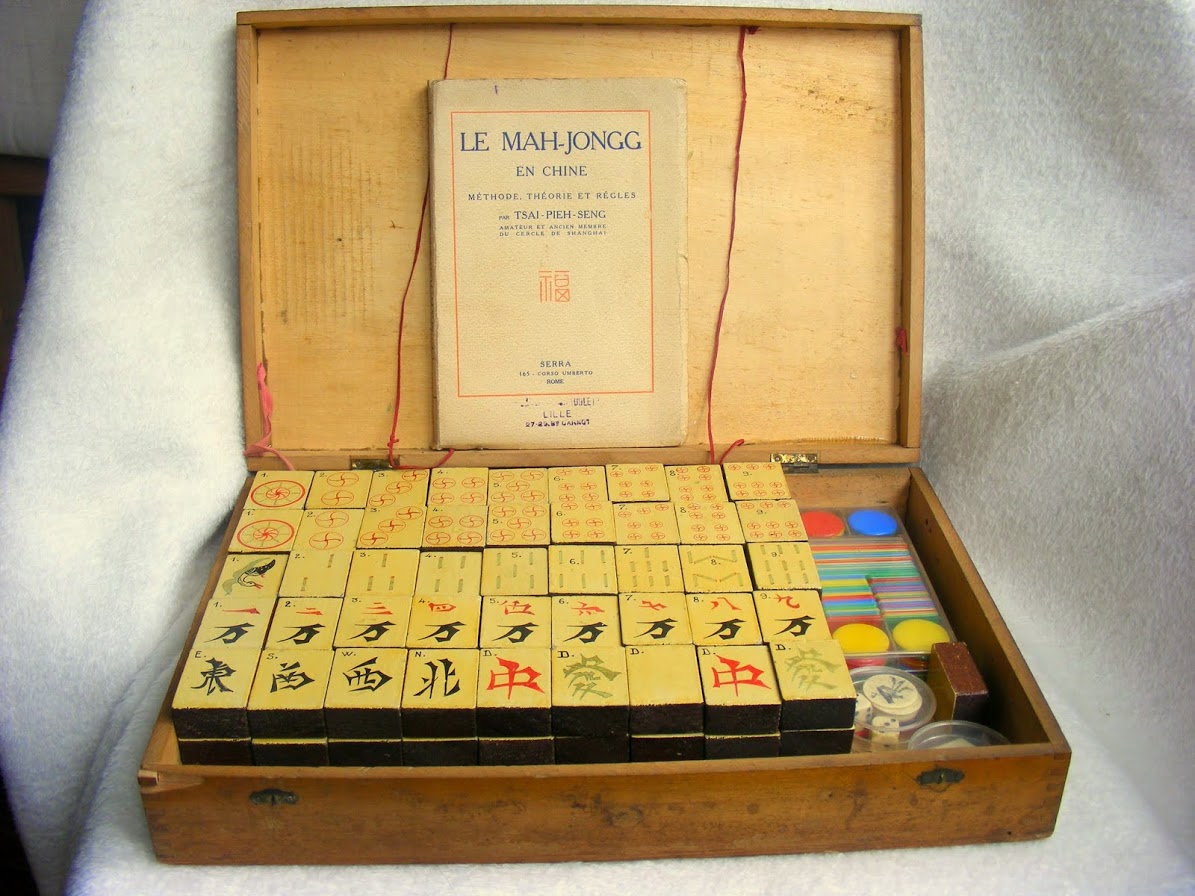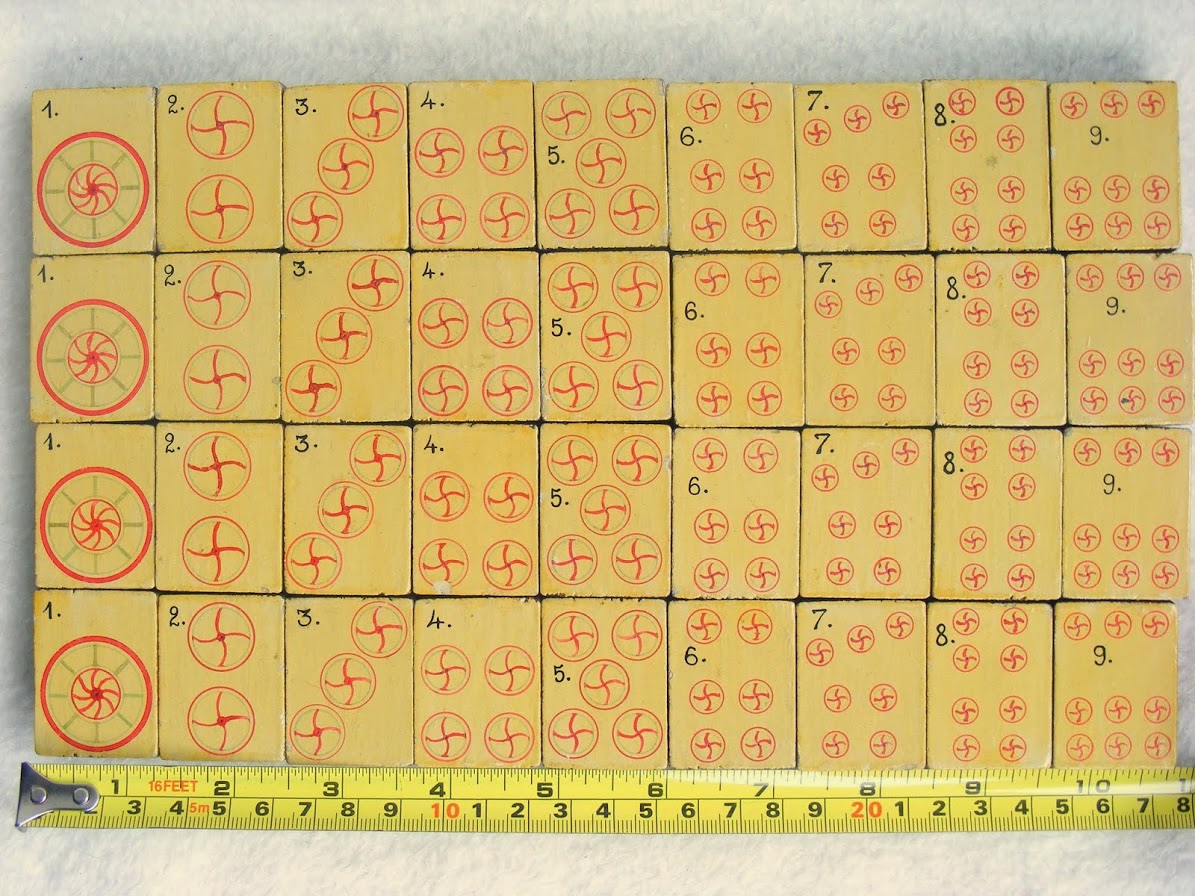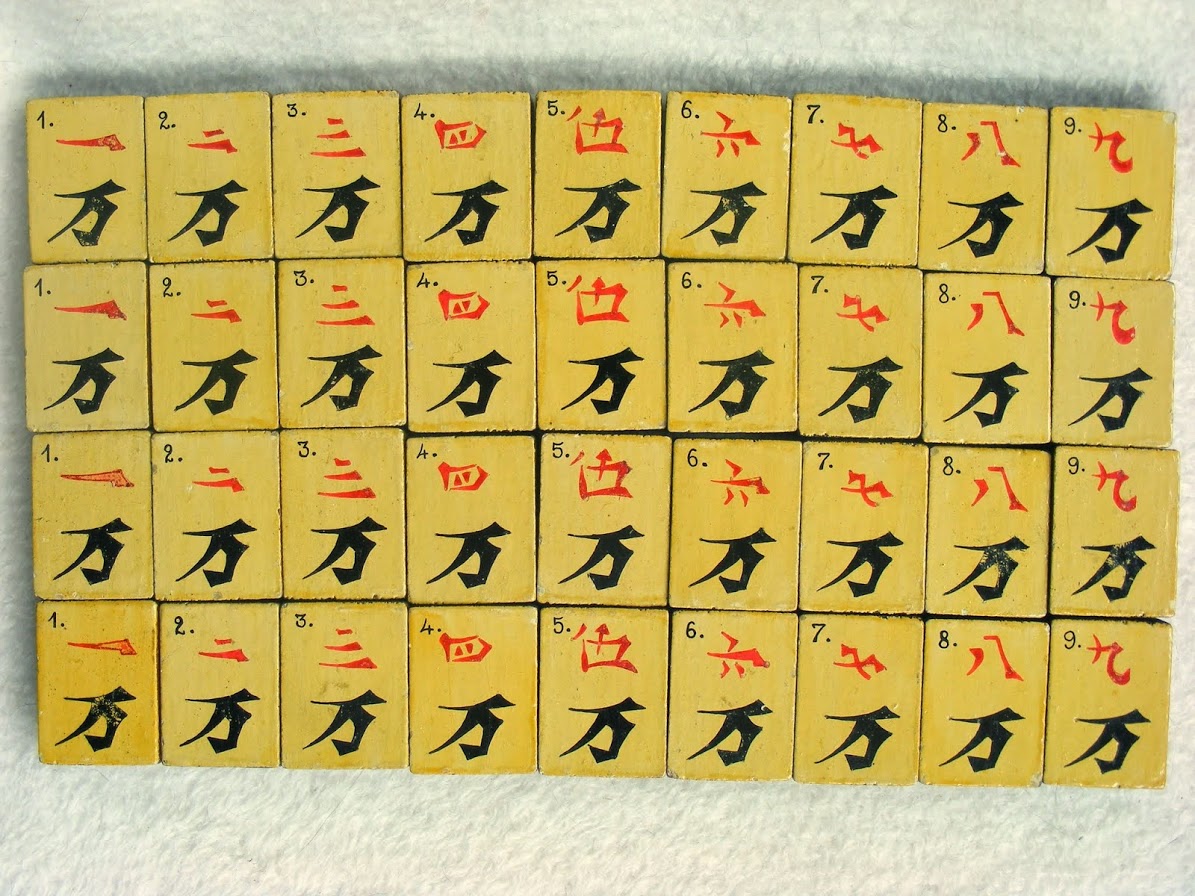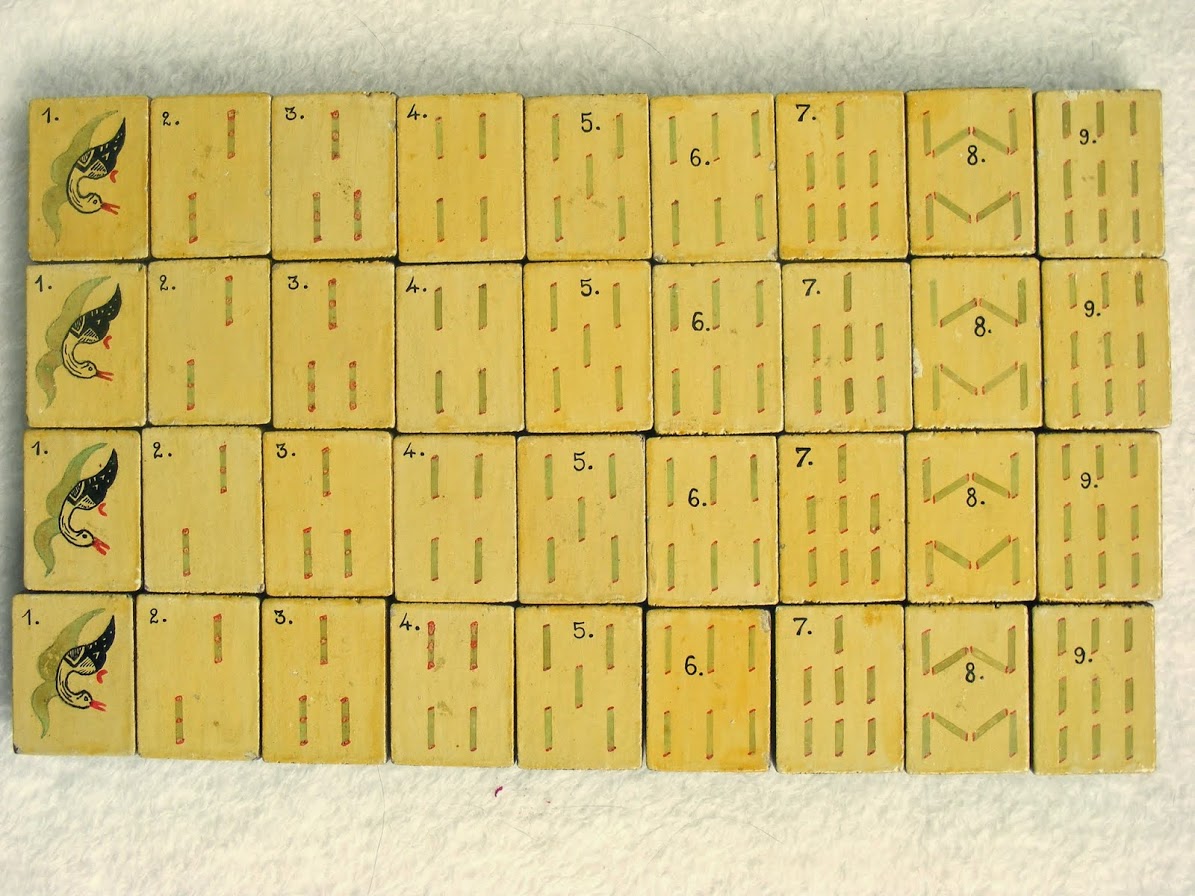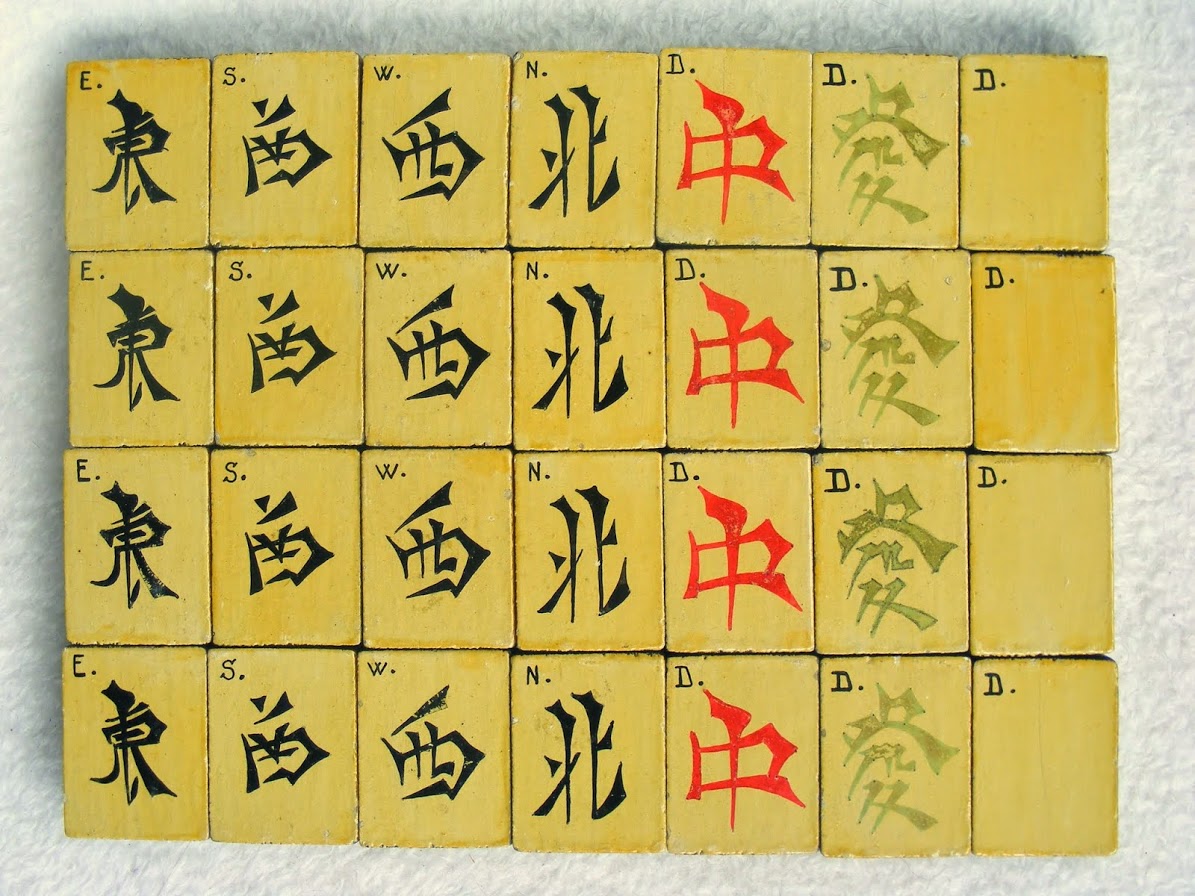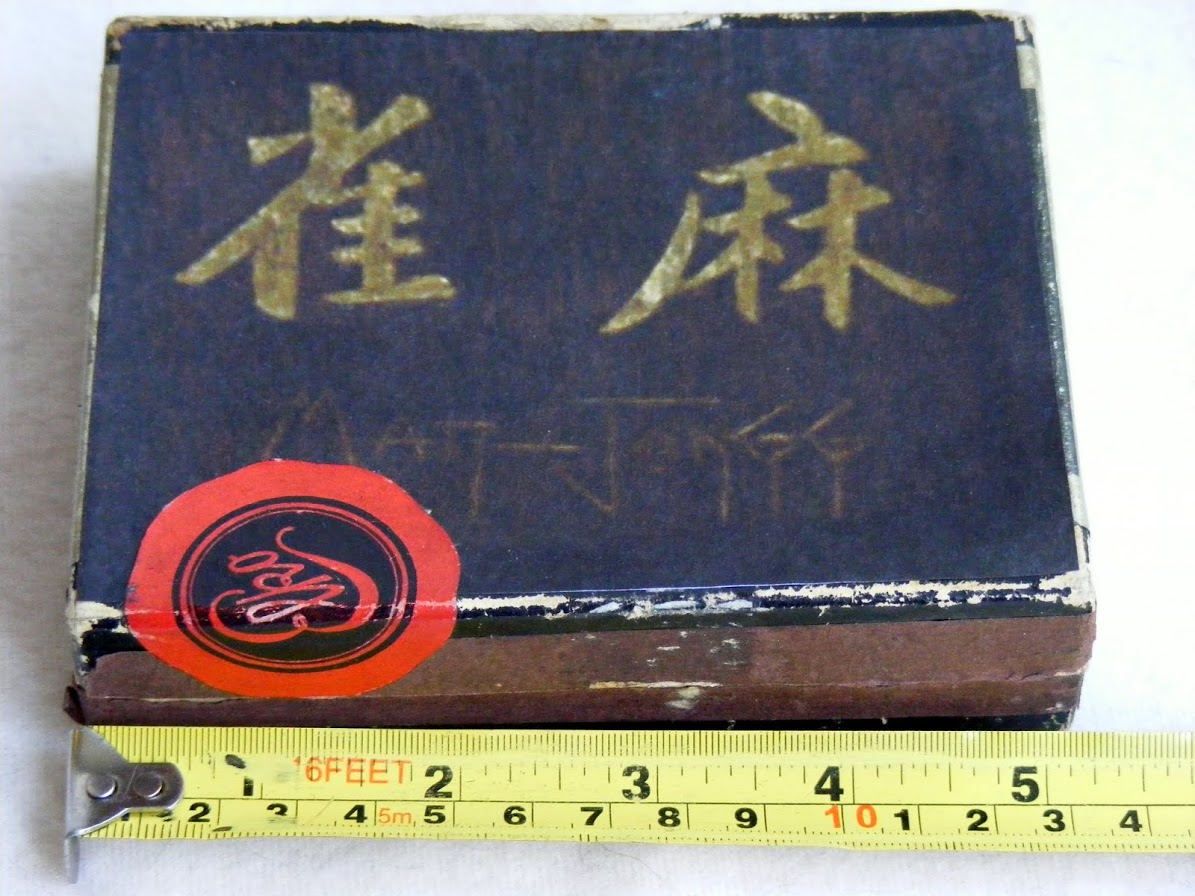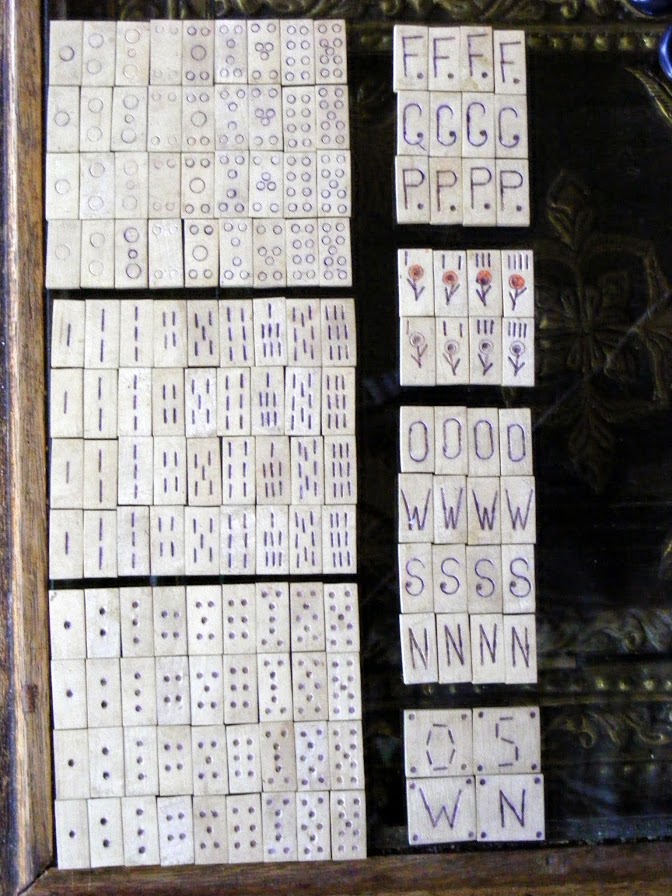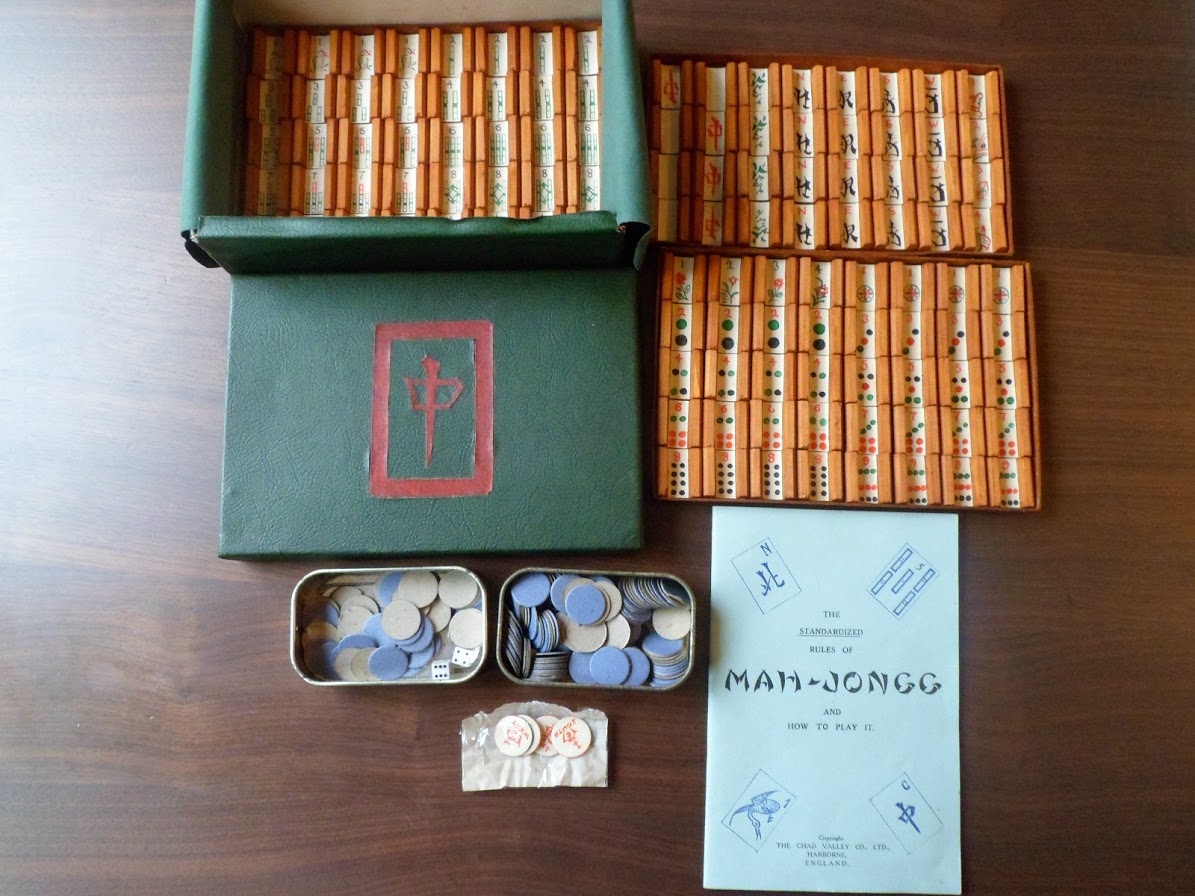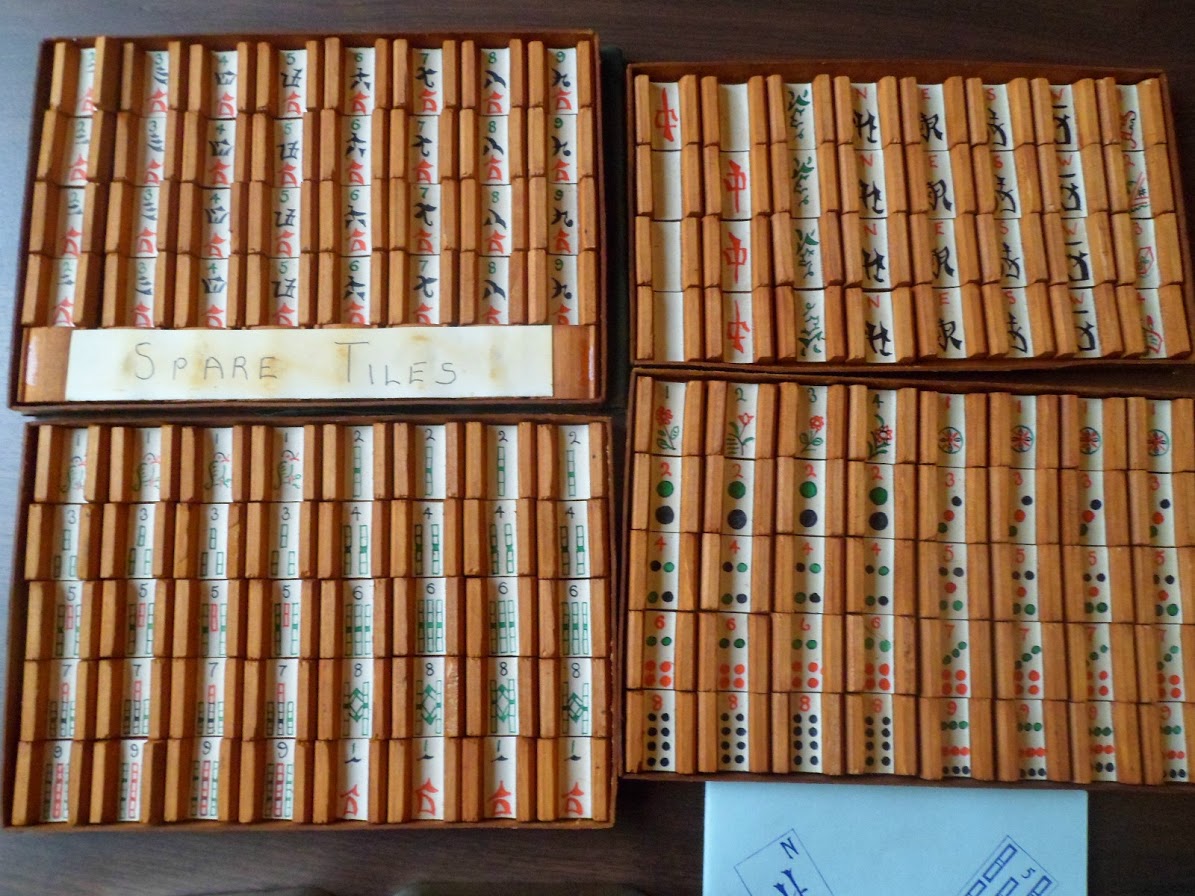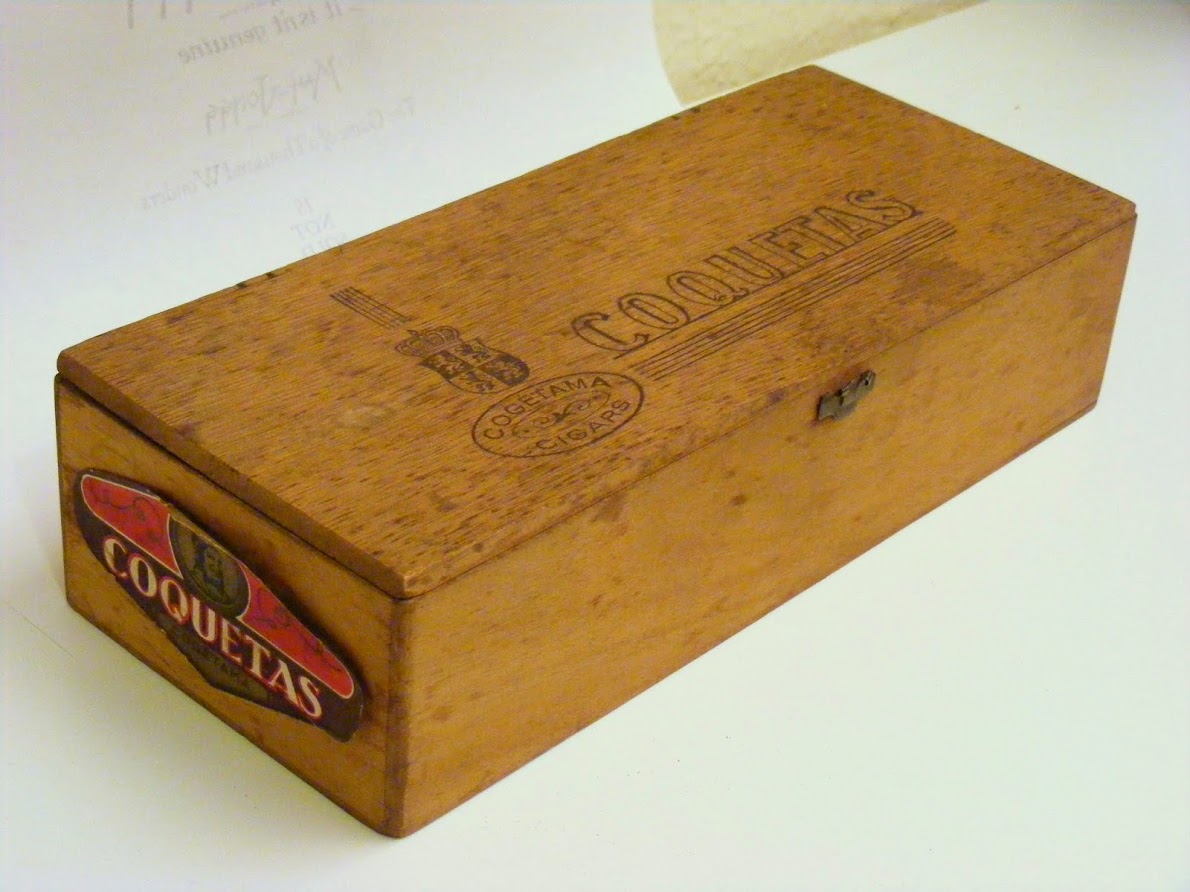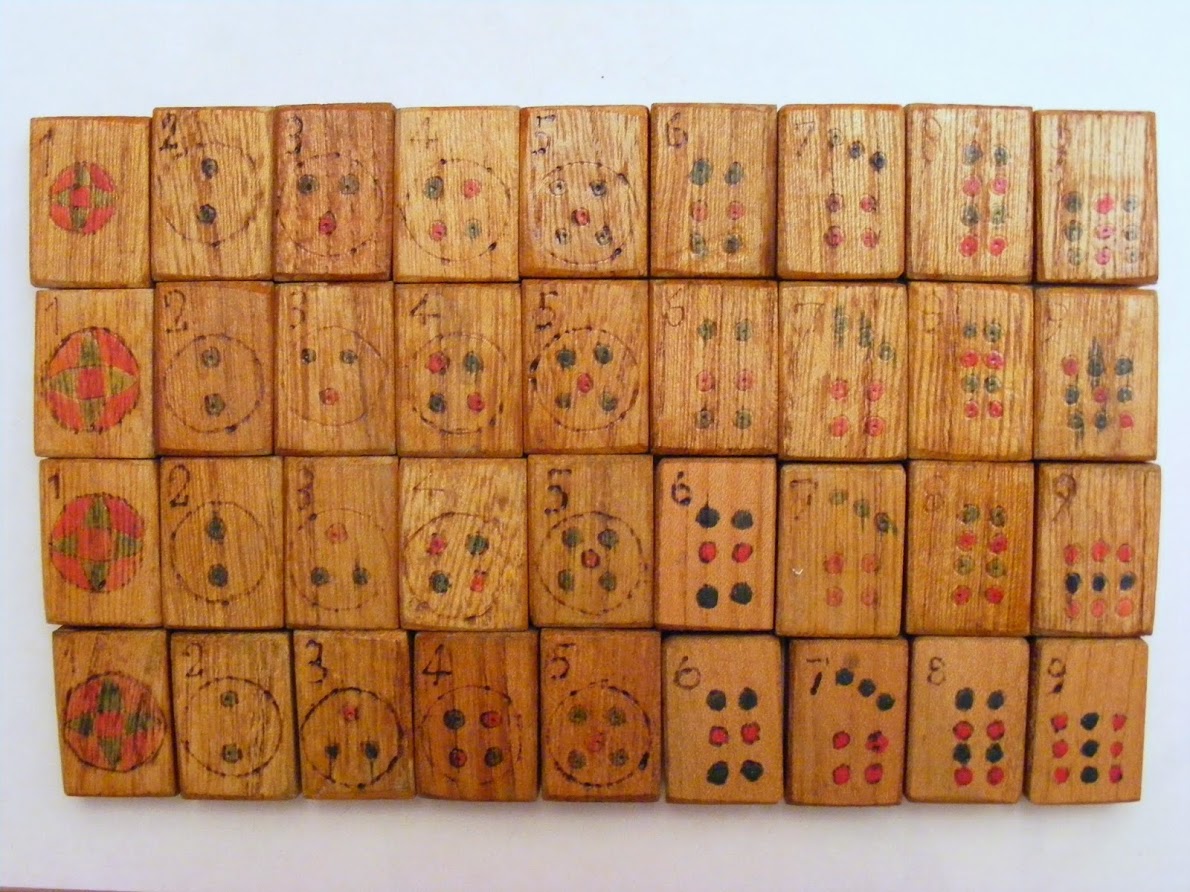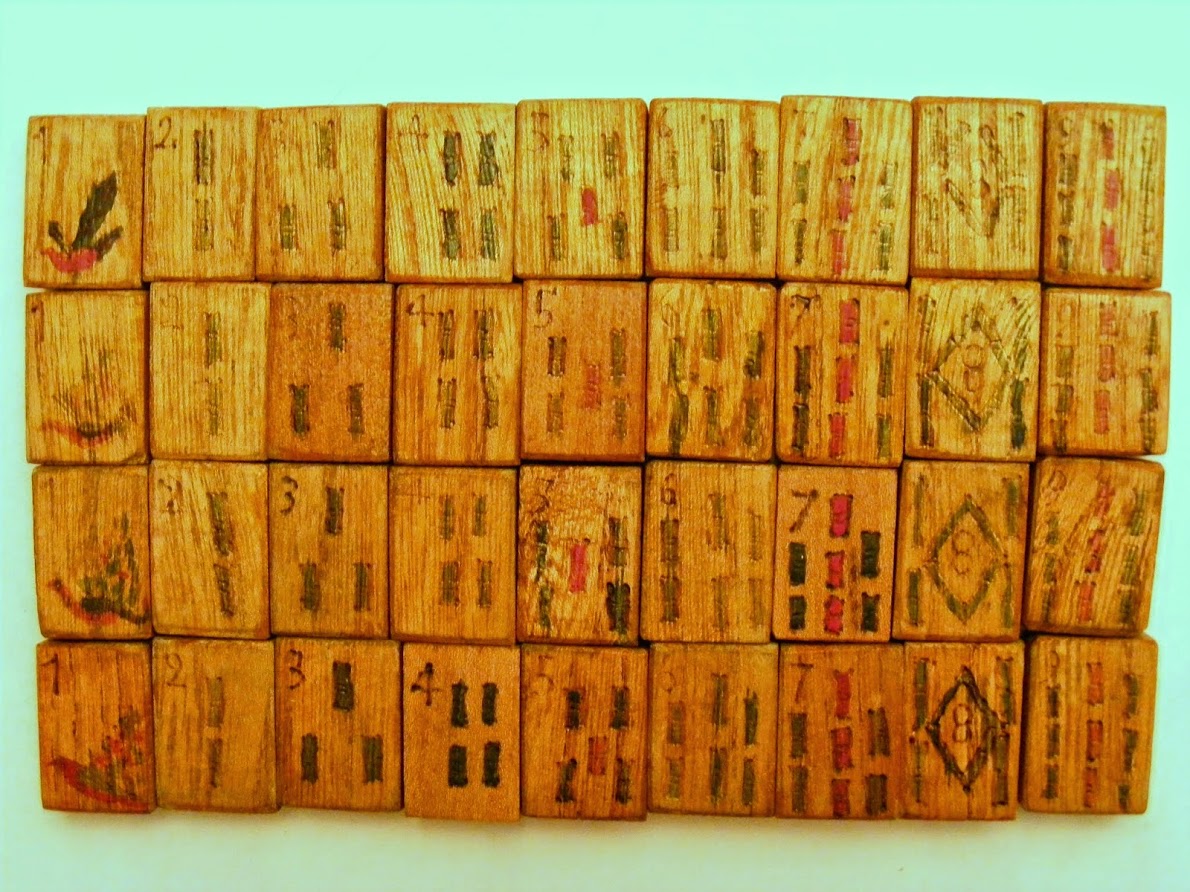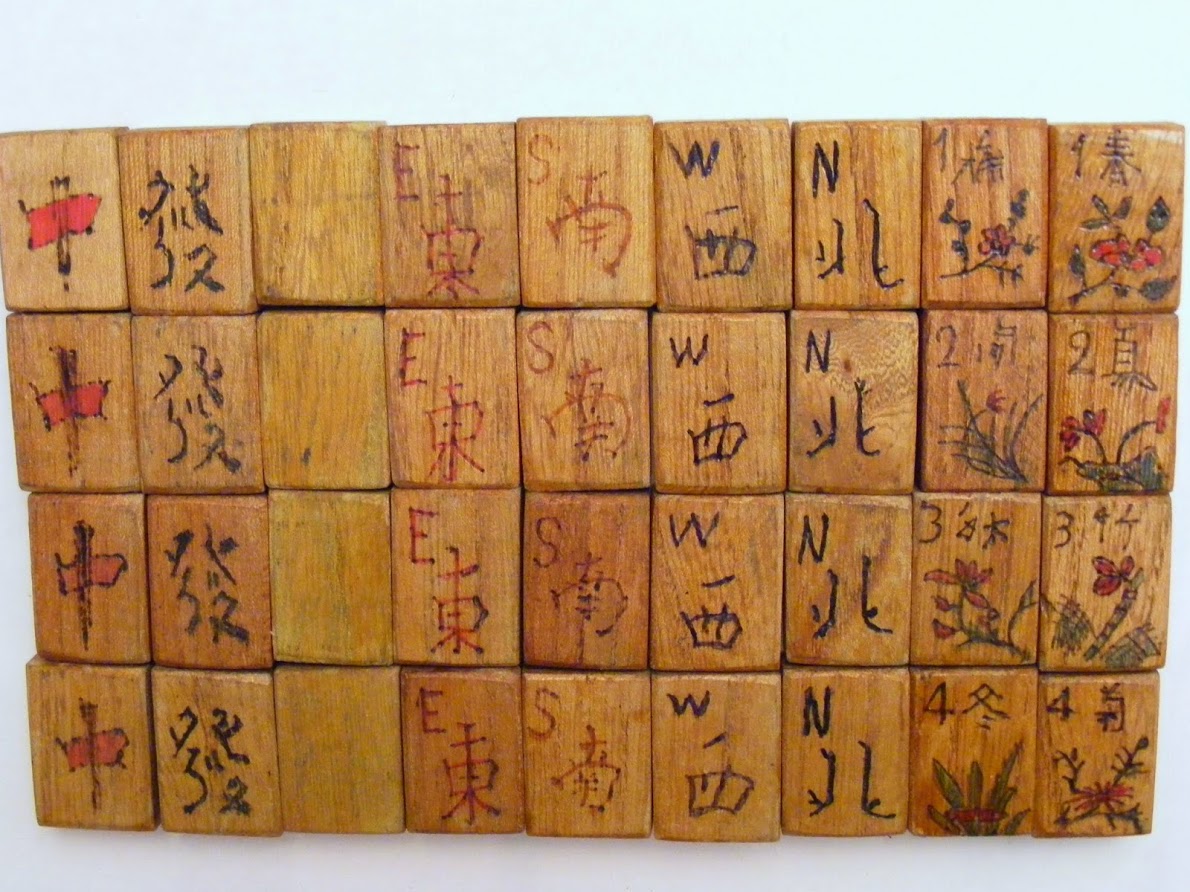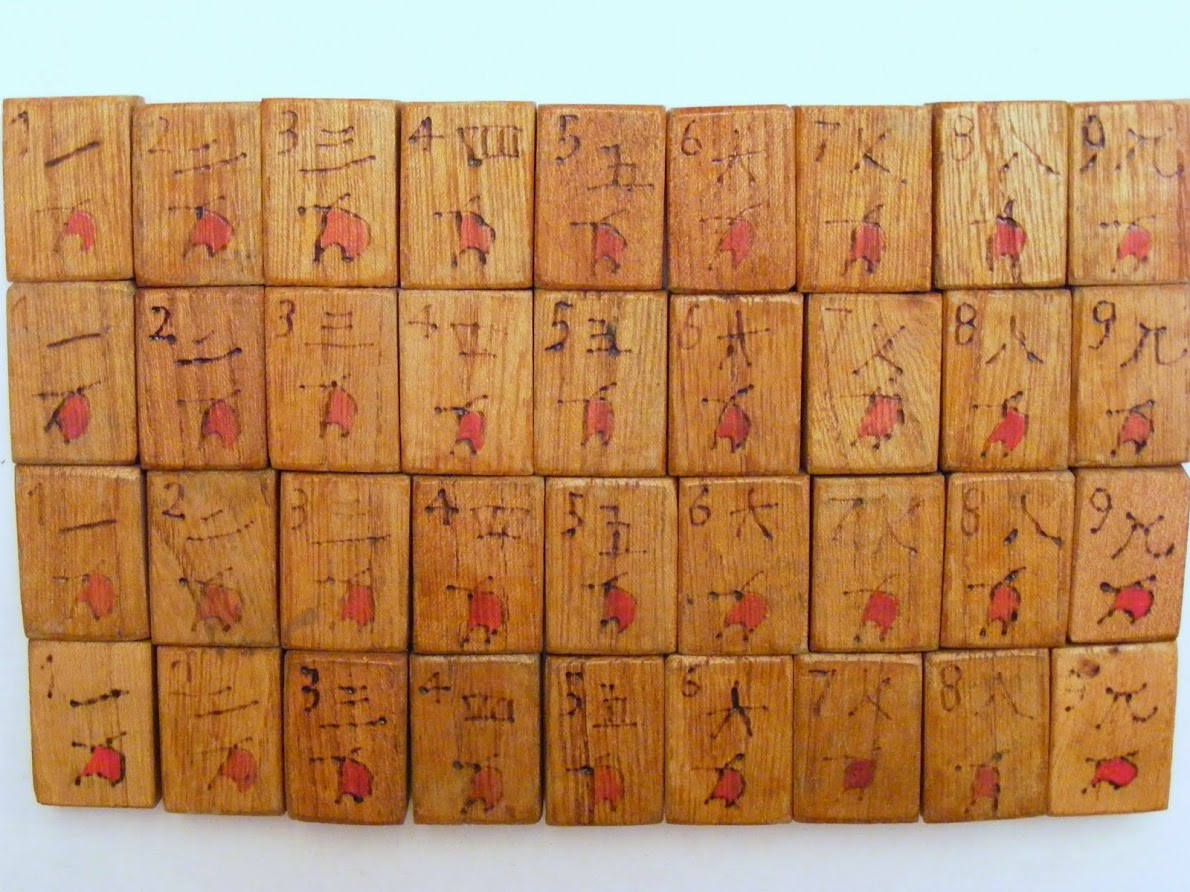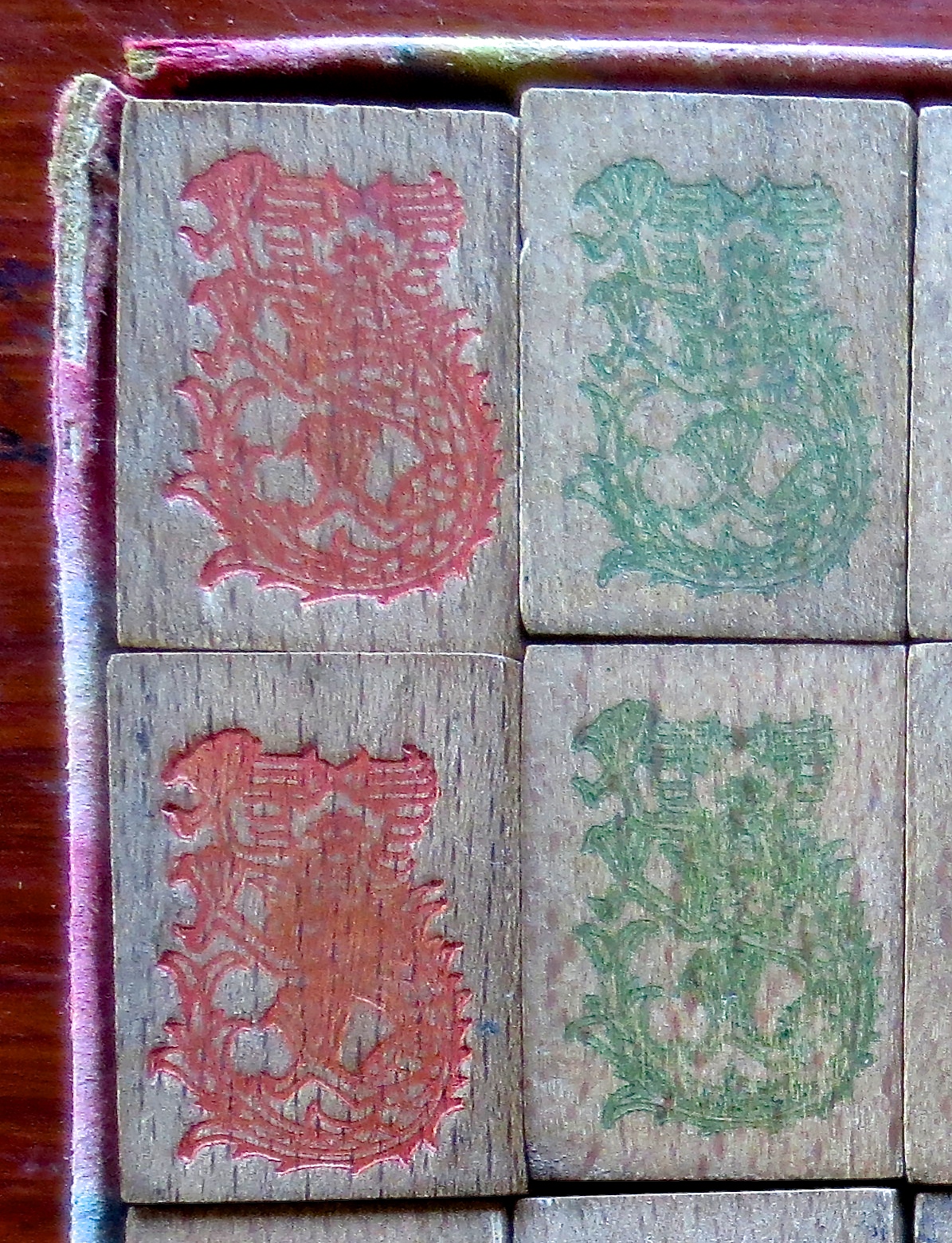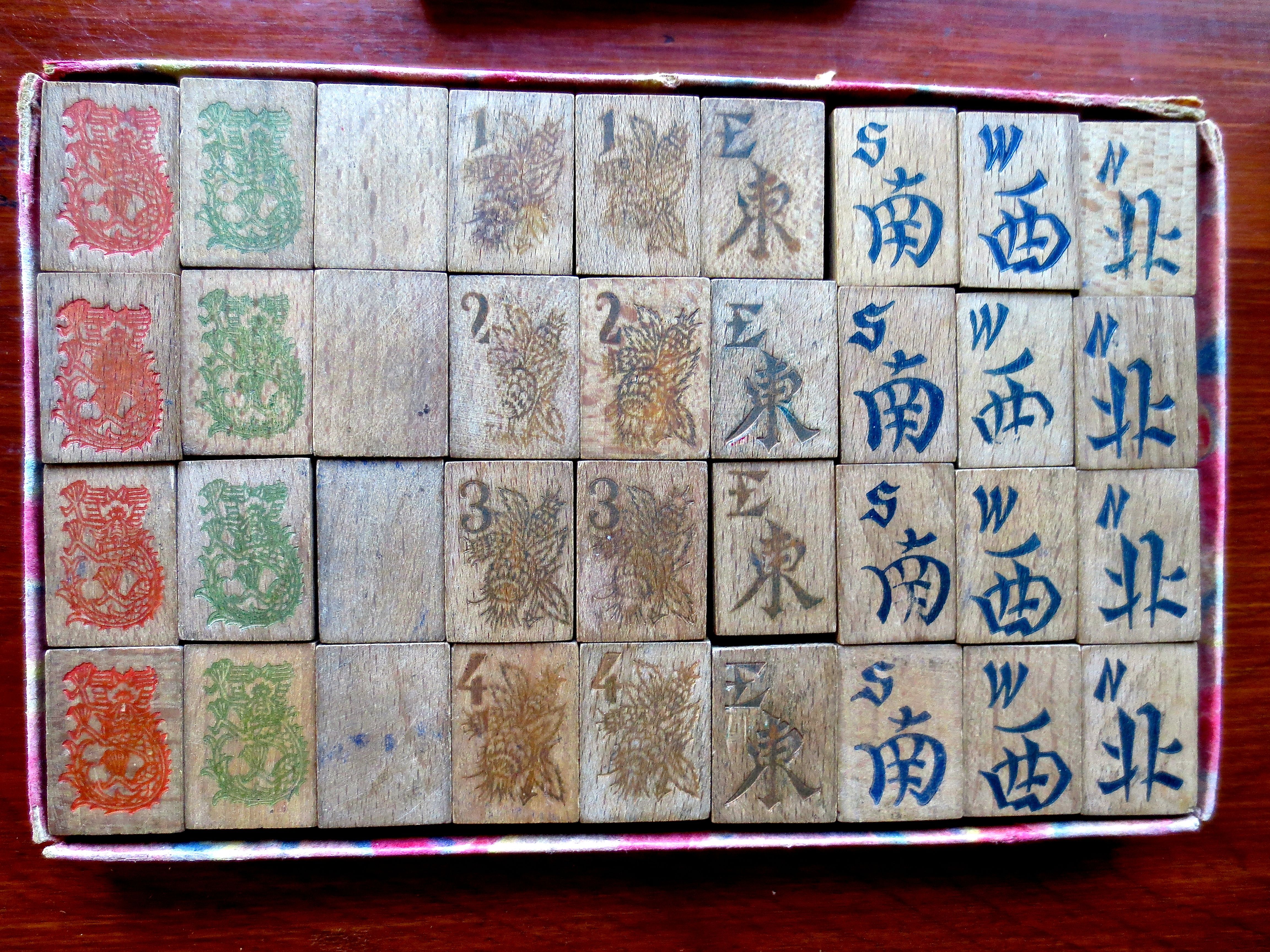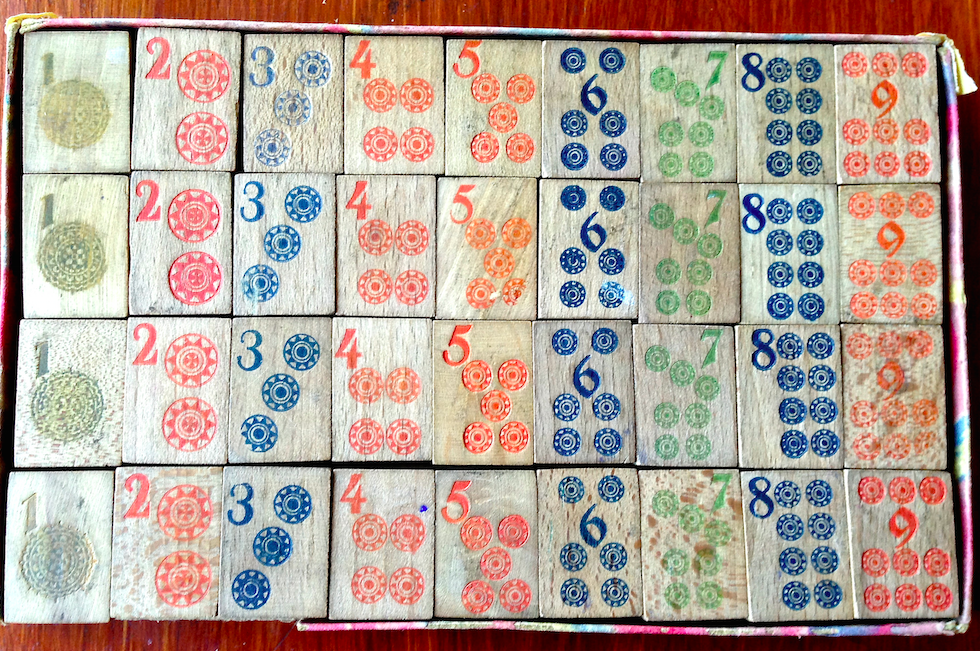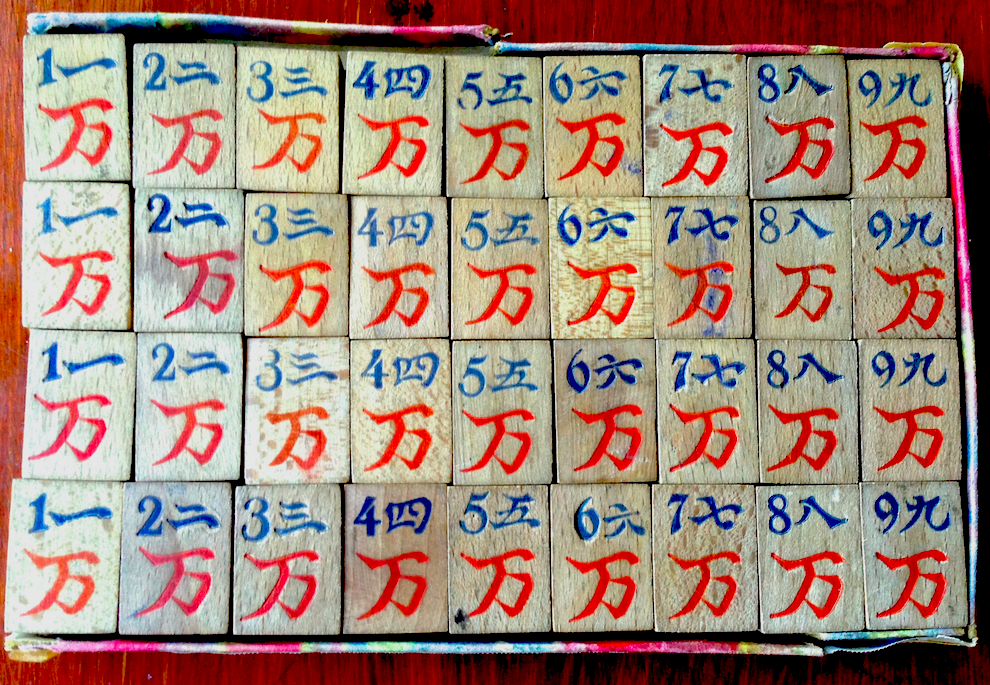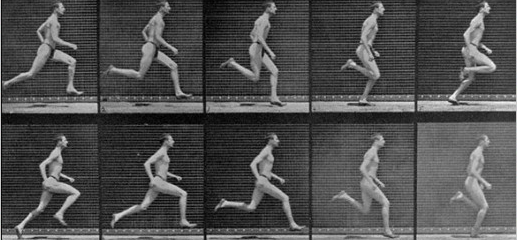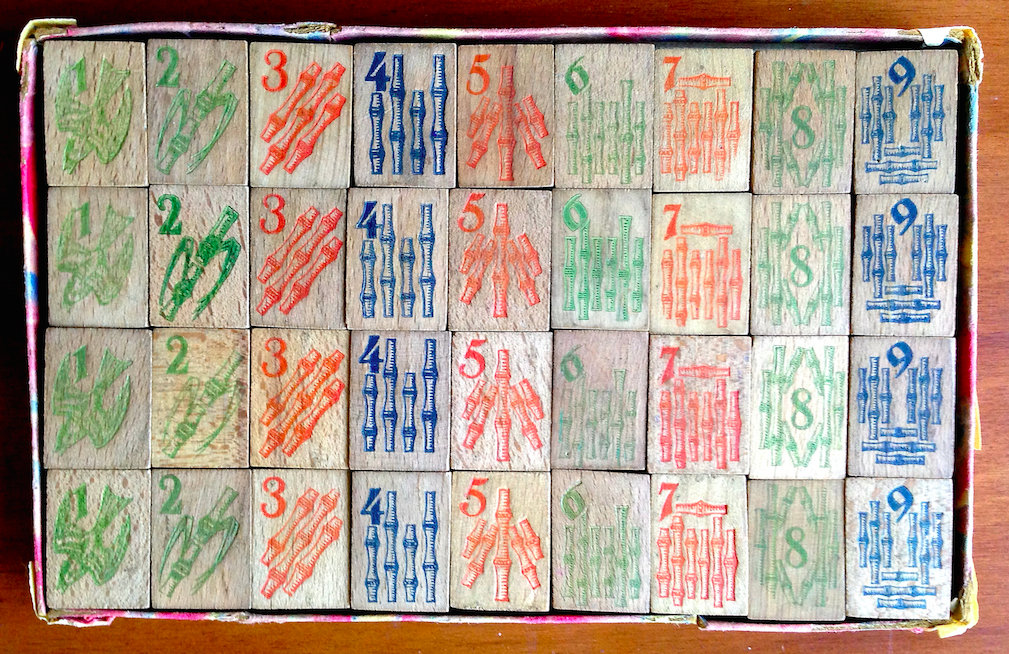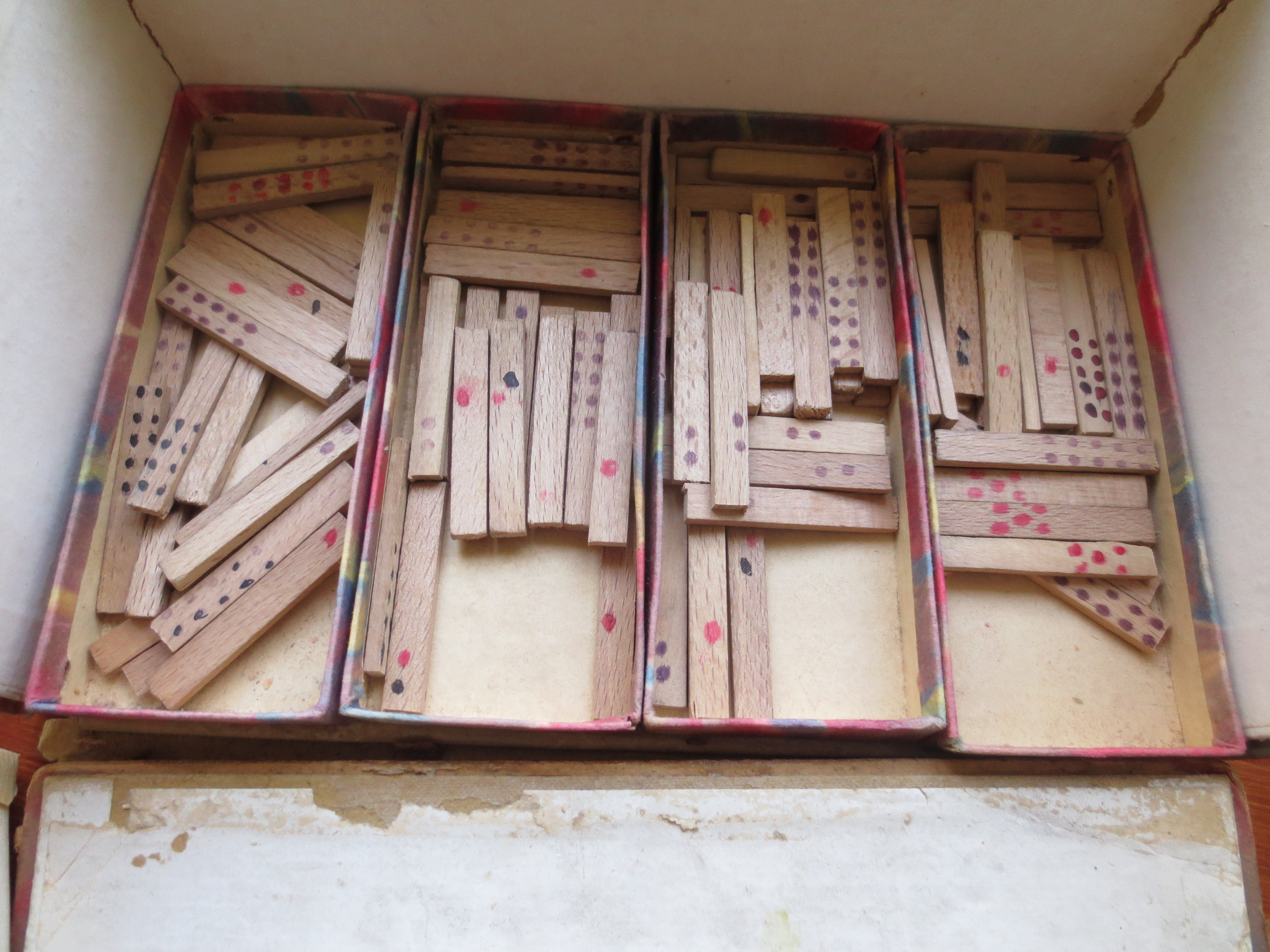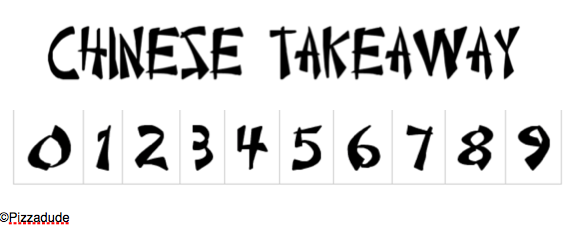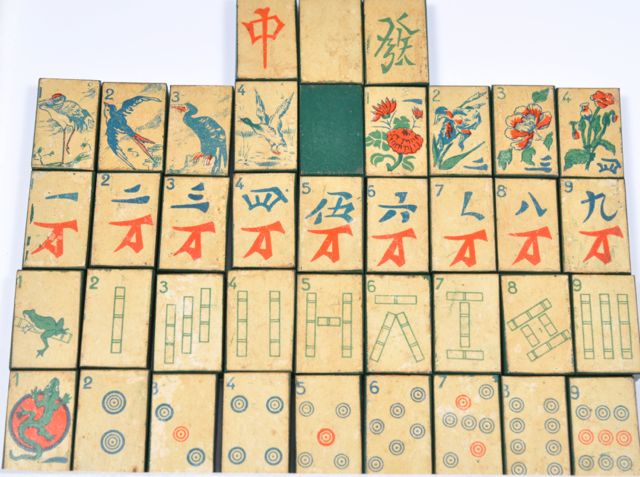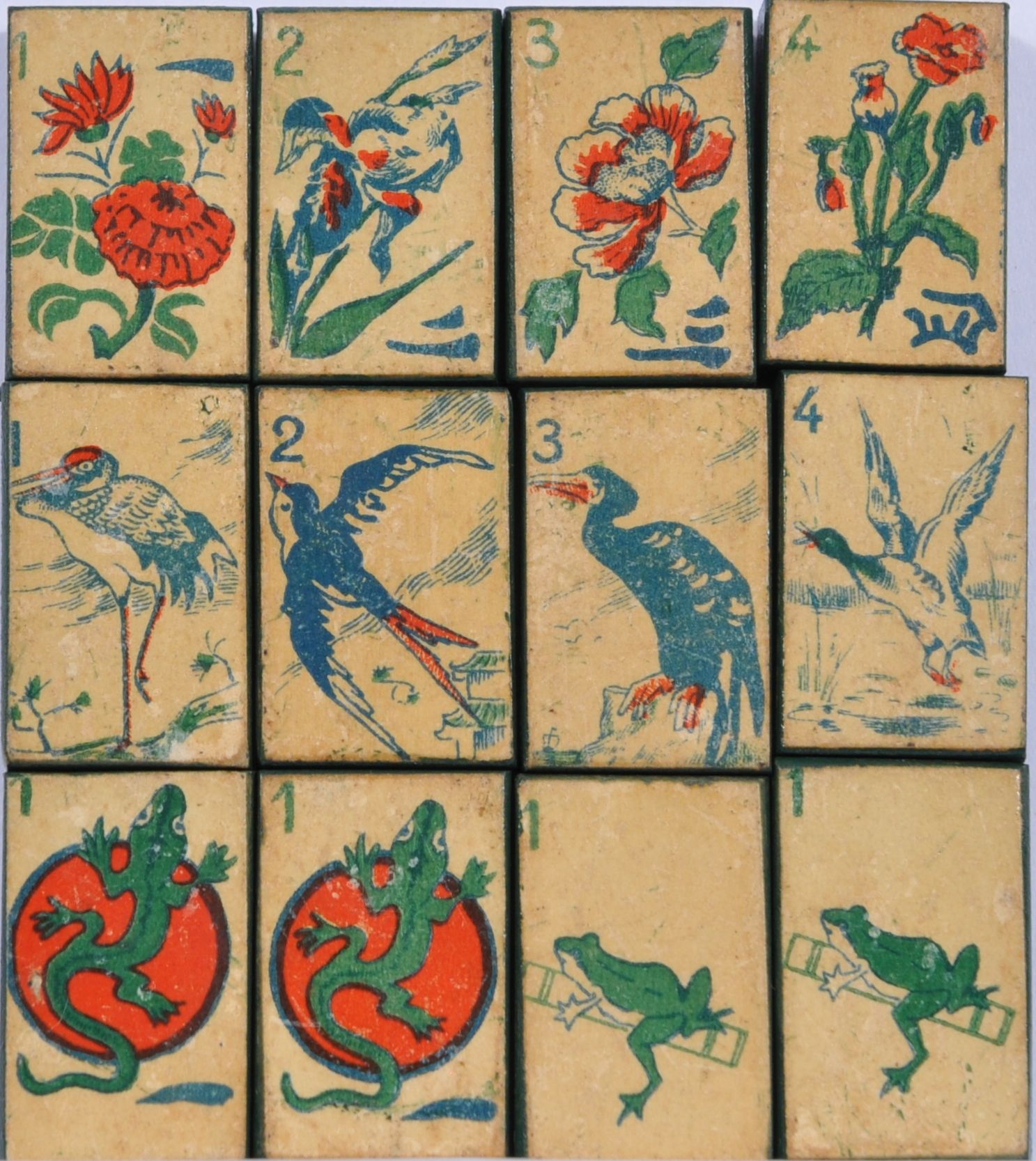There are times that some people just get lucky.
Here's a photo of one lucky find. To begin with, it certainly is an unusual box, with the very tall brass handle and big brass fittings. The inside is just as wonderful, but you will have to wait to see it!
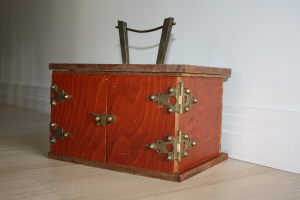
I recently received this email from a reader:
"Thank you, I have no prior knowledge of these so your help is invaluable. It was posted on a vintage facebook group I am in and I was drawn to it for some reason.. I had to have it, I just loved it. I purchased it needing some tlc for $50 aud.
The lady found it in her bathroom 10 years ago when she purchased her home in Fremantle, Perth (Australia). I bought it 3 days ago in the same condition she found it. The only piece of paper that came with it is written in Dutch
On some tiles the brass had separated from the timber base, I have glued both them and drawers back together. One drawer is missing the back piece, (I have not replaced the piece, not sure what to do about that) everything else is intact. I have not cleaned the tiles, I am reluctant to until I know more about it. The history is important to me and I would be devastated if I ruined the story.
Most of the set is glued together, no pins on the tiles just some type of adhesive. The drawers and handles are glued, however the runners are brass, these have screws. The screws are small and with the angle its hard to see if they are machine made. I could see circles on one though so I suspect handmade but cant be sure.
The base of the cabinet has some residue adhesive on it, and you can see some brass pins, as the front of doors also overhang the base, I suspect there is a missing base plate. The cabinet is very heavy for its size. Someone has suggested it may be palm wood. The back corners of the cabinet are dovetailed, to my eye these are handmade by someone very skilled. There are slight irregularities which indicates to me a machine was not used (keep in mind though I can only compare from what I know about antique furniture, I have never looked into something so small before)
The pieces (tiles) measure 32mm long x 21mm wide x 16mm deep. There are irregularities in the engraving so this also tells me handmade. The two dice have a blank side for the one and the four is painted red.
There are no markings that I can see on anything at all.
Under the handle there is a small rectangular mark, I wonder if something had of been glued there at one stage."
So now for the big reveal:
A five drawer chest
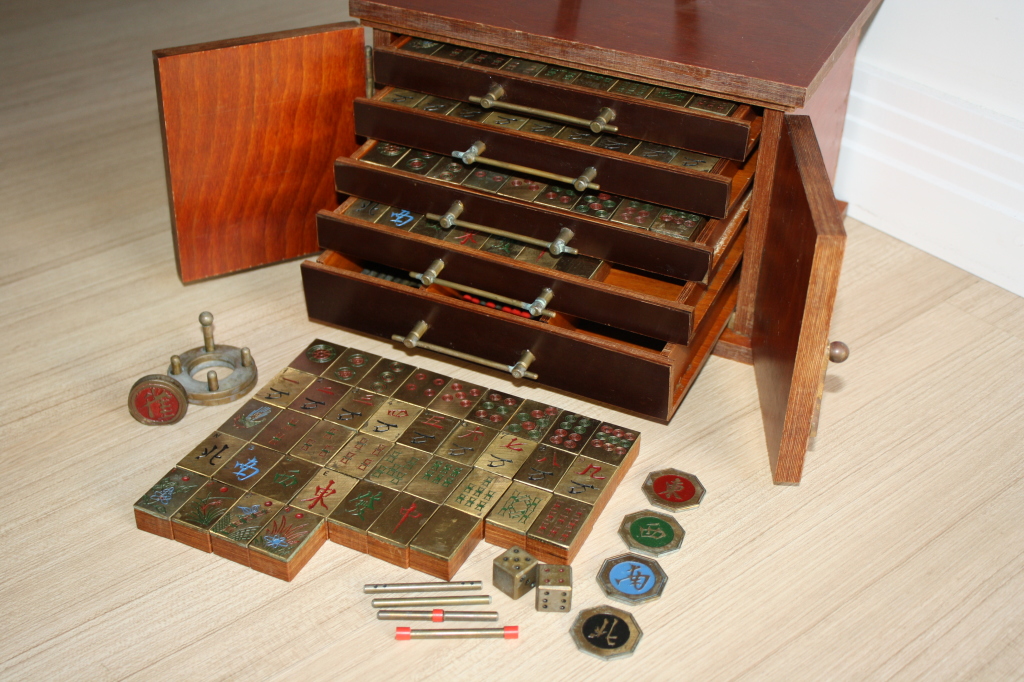
You will notice the tops of the tiles are brass, glued onto the wood backing. Everything about this set is unusual. The Wind indicators are octagonal painted brass pieces, that fit into the large piece with the four big screws. The dice and the counters are also metal. I love the brass counters with the red trim on some of them. That blue color of paint is rare.
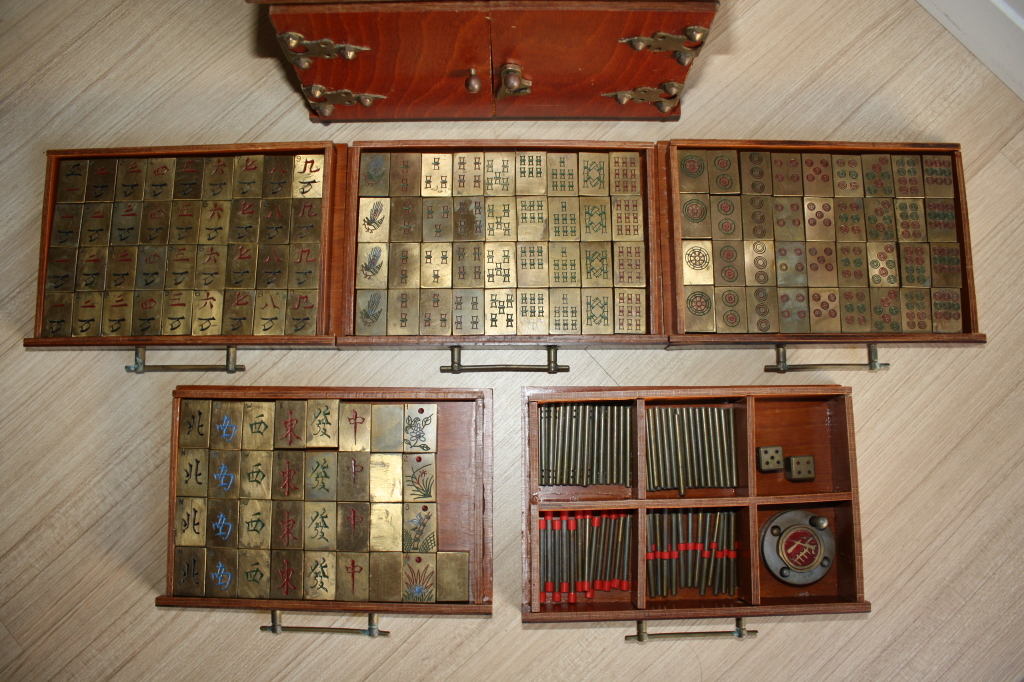
Looking at the set like this, I get a nautical feeling about it. Certainly those big rounded screws around the wind indicators bear a resemblance to portholes on ships, such as this one from the mid 20th century. Brass was often used for ship fittings.
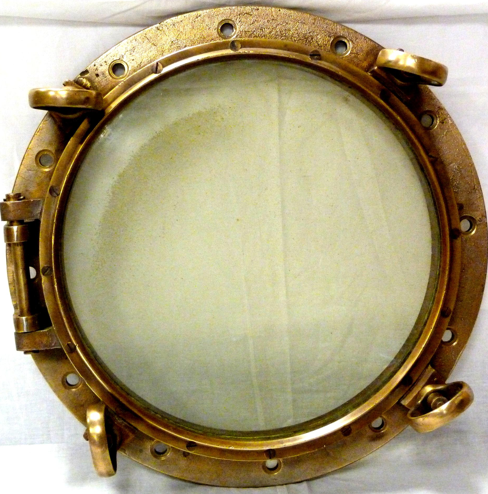
Many portholes have three screws to hold the window in place, but not all as you can see above.
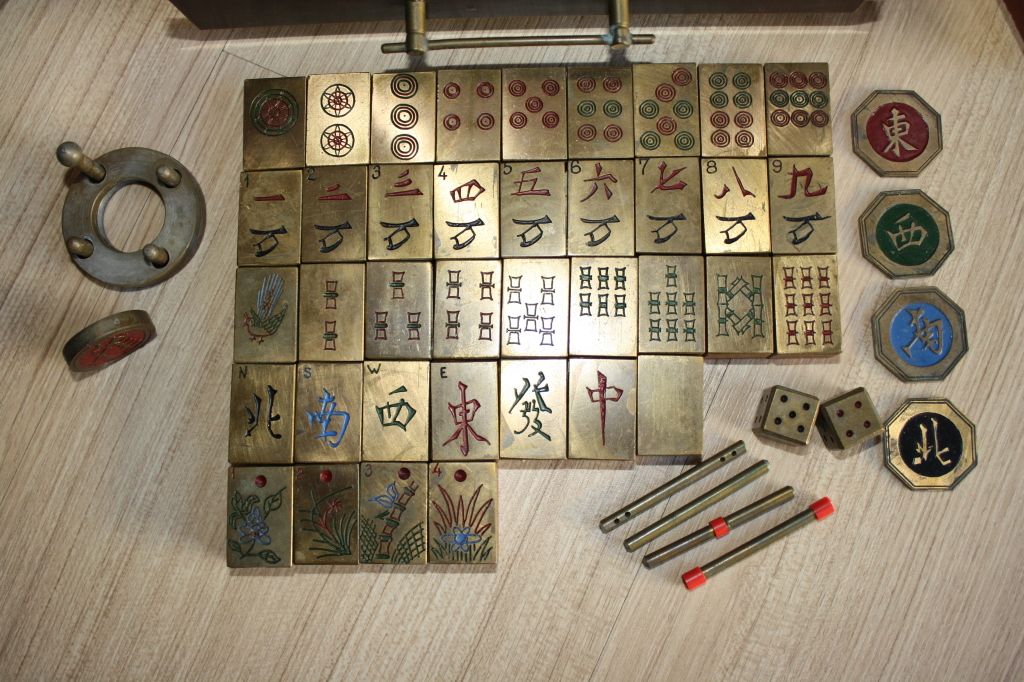
The carvings are highly unusual, with great style.
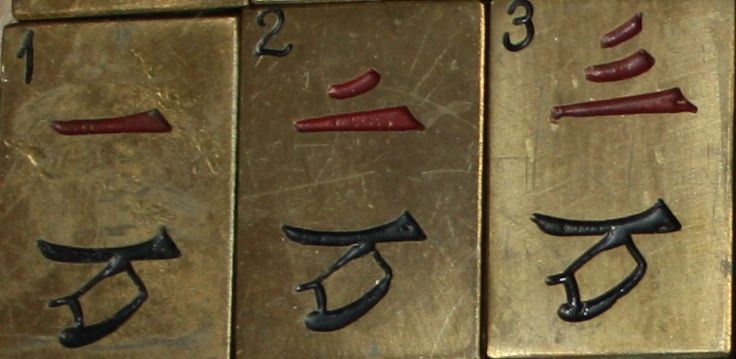
The Crak characters look like European versions of the design, as do the renderings of the Chinese numbers which are also highly stylized. I love the way these three numbers almost build to a triangle. The Arabic numbers are very clearly carved, with elaborate versions of the numbers.

Look at the way the Chinese 7 is carved. It really looks like Neptune's trident to me:
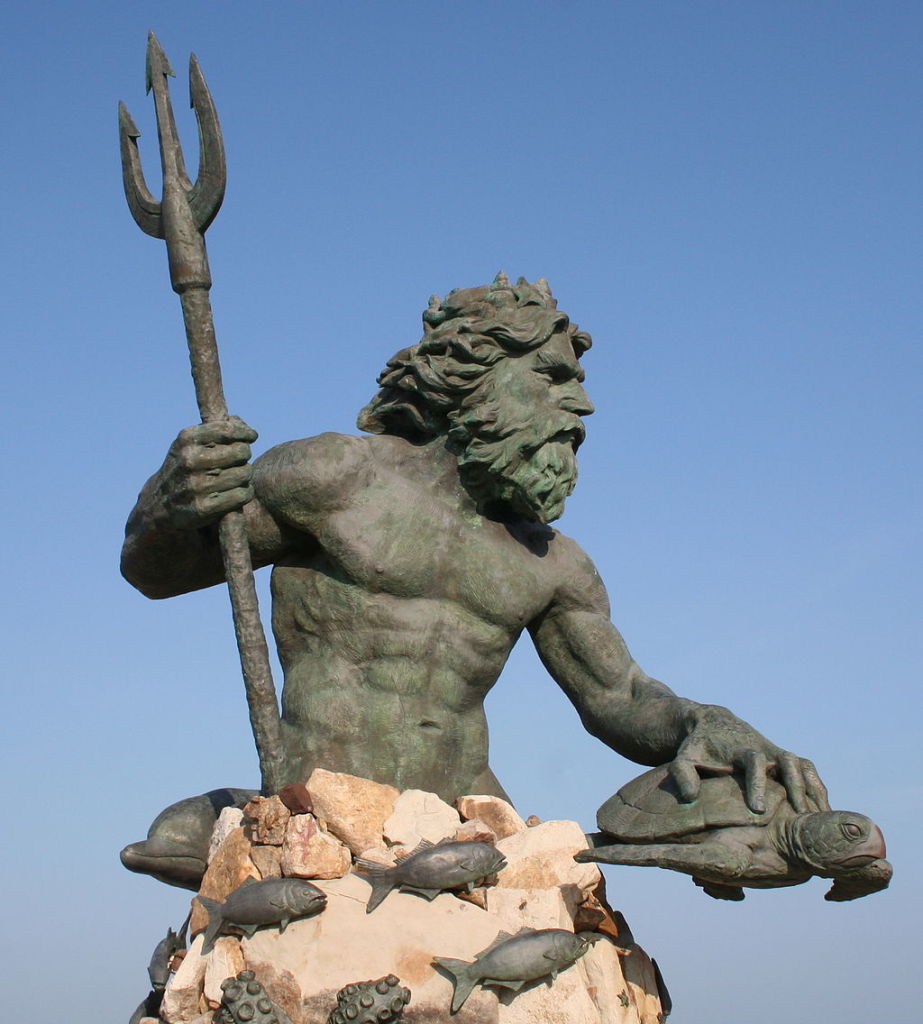
Here's Neptune in a statue in Virginia Beach, VA, with his trident which is quite similar to the Chinese 7, right?
The One and Two Dots have stars inside
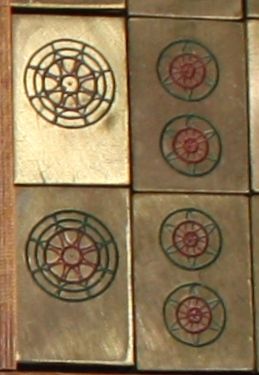
The One and Two Dots which are more elaborate than the other Dots which are circles within circles. To me these are very similar to the Nautical compass, or Rose Compass, with the two outside circles surrounding the eight pointed star:
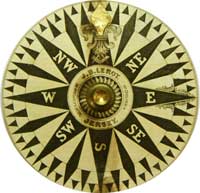
This image is from:
http://compassmuseum.com/nautical/nautical_2.html
The 7 Dots has a different design too, although we have seen this before on some other sets:
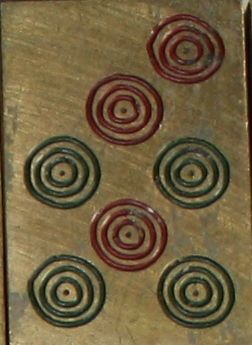
The Bams are unusual too:
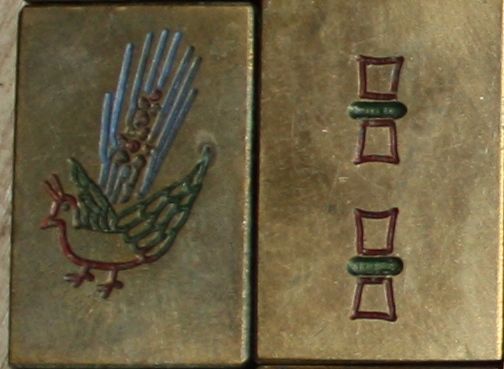
It almost looks as if the Two Bams are tied with a ribbon.
The Flowers, and there are only four as is common in many types of play:
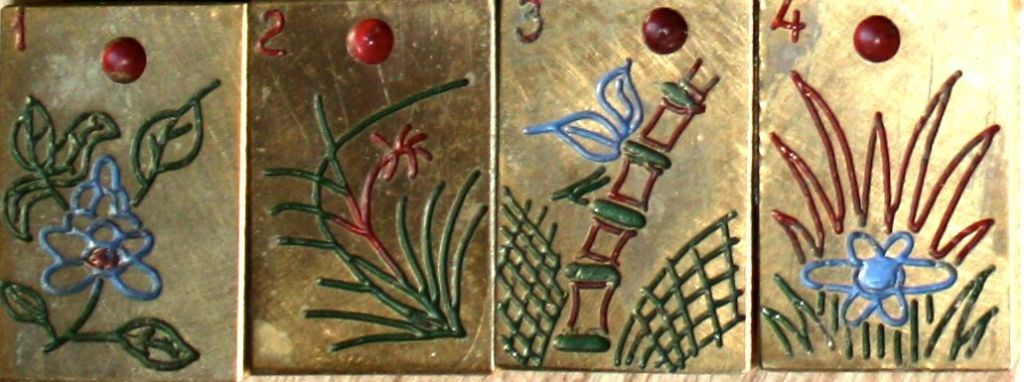
You will see the plants associated with these designs:
plum blossom, orchid, bamboo and chrysanthemum, but all lacking the Chinese characters we often see. I don't know the reason behind the "pip" on the top of the tiles, unless they are there to readily and quickly identify the tile by touch as a lucky or bonus tile.
Here is the translation of the piece of paper found with the set:
"Environmental pollution the Chinese way.
The government of the British Crown colony Hong Kong has, in the context of their environmental defensive, started to combat the Chinese passion: the game of Mahjong.
According to the government, the noise of the mahjong tiles on the gaming tables, disturbs the evening calm of the highly populated areas of Hong Kong, in a irresponsible way.
The government however does think twice before forbidding mahjong. Instead it suggests to cover the tables with cloth to hush the echo."
Many of us know how futile it would be to ban the playing of Mahjong; table covers are a much better way of dealing with the noise problem!
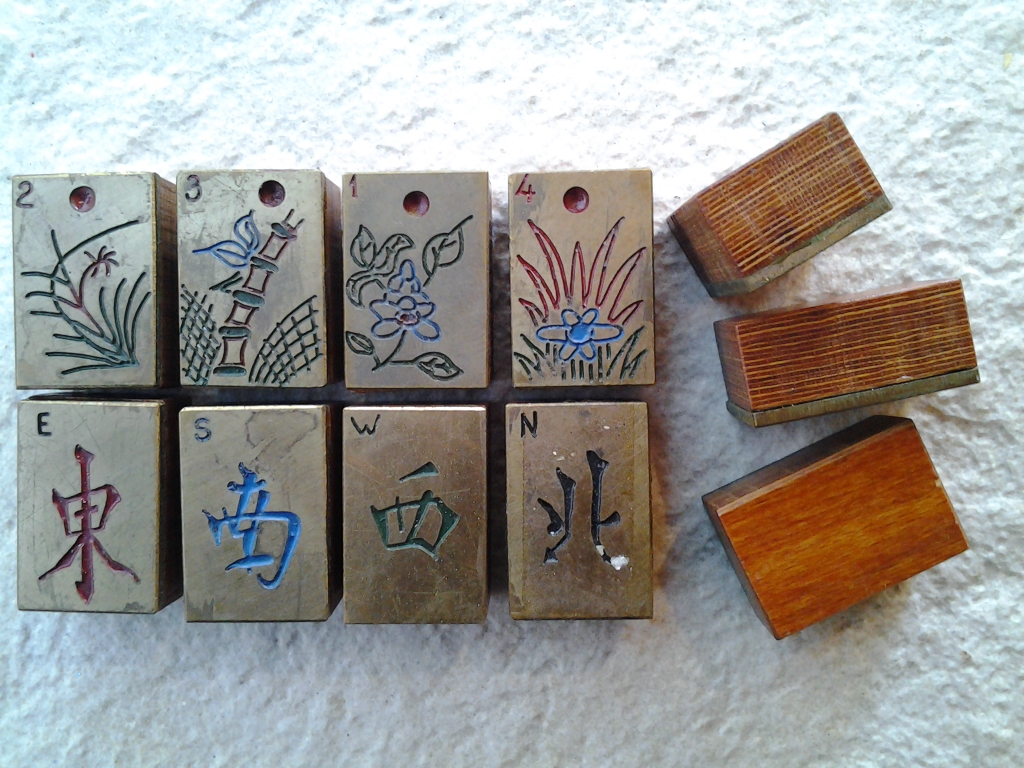
Some closeups of the box, so that you can see the wood used and the brass runners for the drawers:
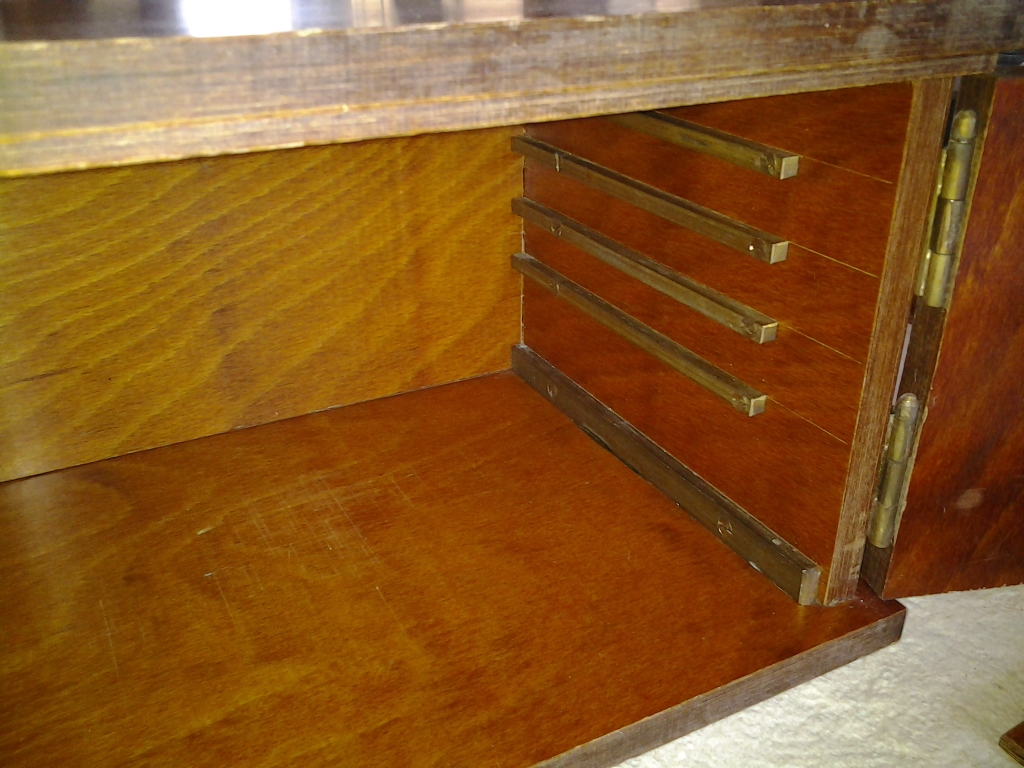
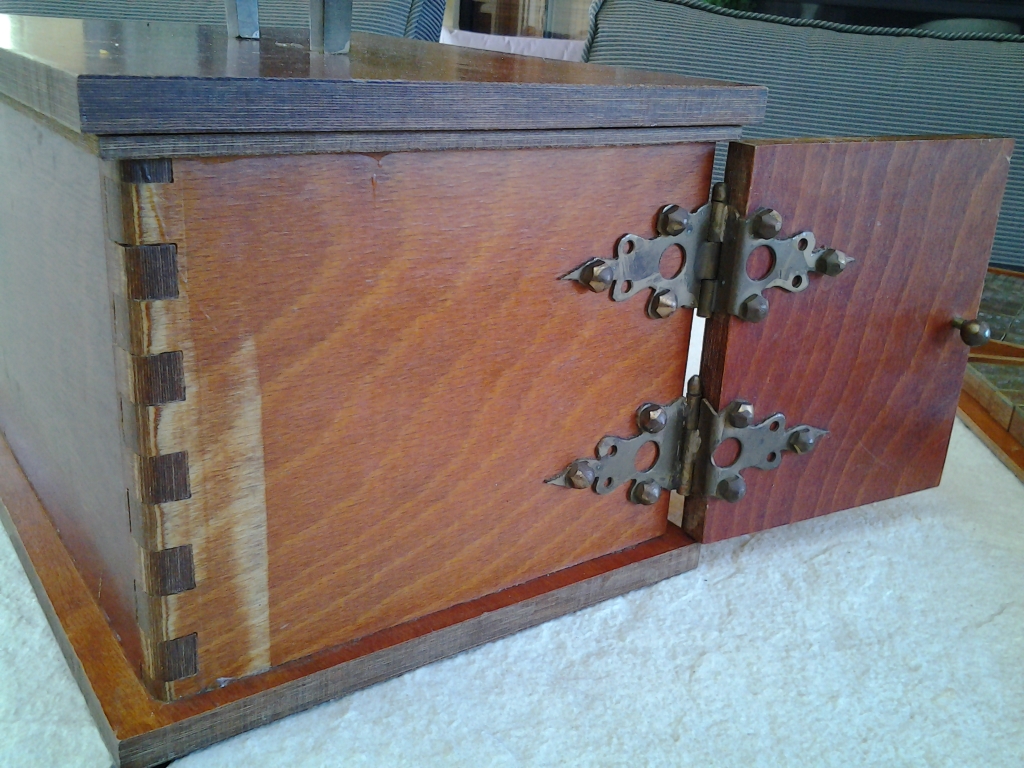
Reader Tony Watson has weighed in with some thoughts about the wood used:
"I've had a really good look at the wood on these tiles; it's definitely NOT palm, the nearest thing I can associate it with is Laburnum, looking at the side grain. But the end grain is so straight, the tree diameter would need to be massive not to show any curvature so I don't think the wood is 'natural'.
I think this is plywood, but not your ordinary stuff; I think it's a load of veneers glued together - thats the only way I can see to get the grain looking the same on the end and the side; most evident on the edges of the top panel of the box. Down the side at the dovetails, you can see that the sanding has revealed the layers of the veneers (I think?) Don't know what the wood is, but it has flecks like beech, but so does iroko, so this might be a better candidate? "
Given that Fremantle is a major port in Australia, I would hazard a guess that the set was made for someone in the shipping business, perhaps a ship's captain who spent time in Europe, hence the piece of paper with the notice about noisy mahjong players translated at the beginning of the piece.
The sharp edges of the tiles indicate that the set was not made in China since the Chinese don't like sharp edges. The set's carvings somewhat resemble the mother-of-pearl one we saw earlier this year.
What a wonderful, probably one of a kind, find.
You can now follow me on Twitter!
@MahJonggGregg
To learn more about Mah Jongg, you might want to take a look at this book that I wrote with Ann Israel, published by Tuttle. To see more about it:
www.mahjonggtheartof thegame.com
To order it click here:
http://www.barnesandnoble.com/w/mah-jongg-ann-israel/1118759459?ean=9784805313237
or here from Amazon
http://www.amazon.com/Mah-Jongg-Collectors-Guide-Tiles/dp/4805313234/ref=sr_1_7?ie=UTF8&qid=1414844427&sr=8-7&keywords=mah+jongg












